Ecosystem-centered microbial ecology & biogeochemistry
Biology Department, StFX (May 2nd, 2022)
Jesse McNichol (he/him) : PhD, Biological Oceanography
Postdoctoral Scholar, University of Southern California





100 light years away, on an Earth-like exoplanet...
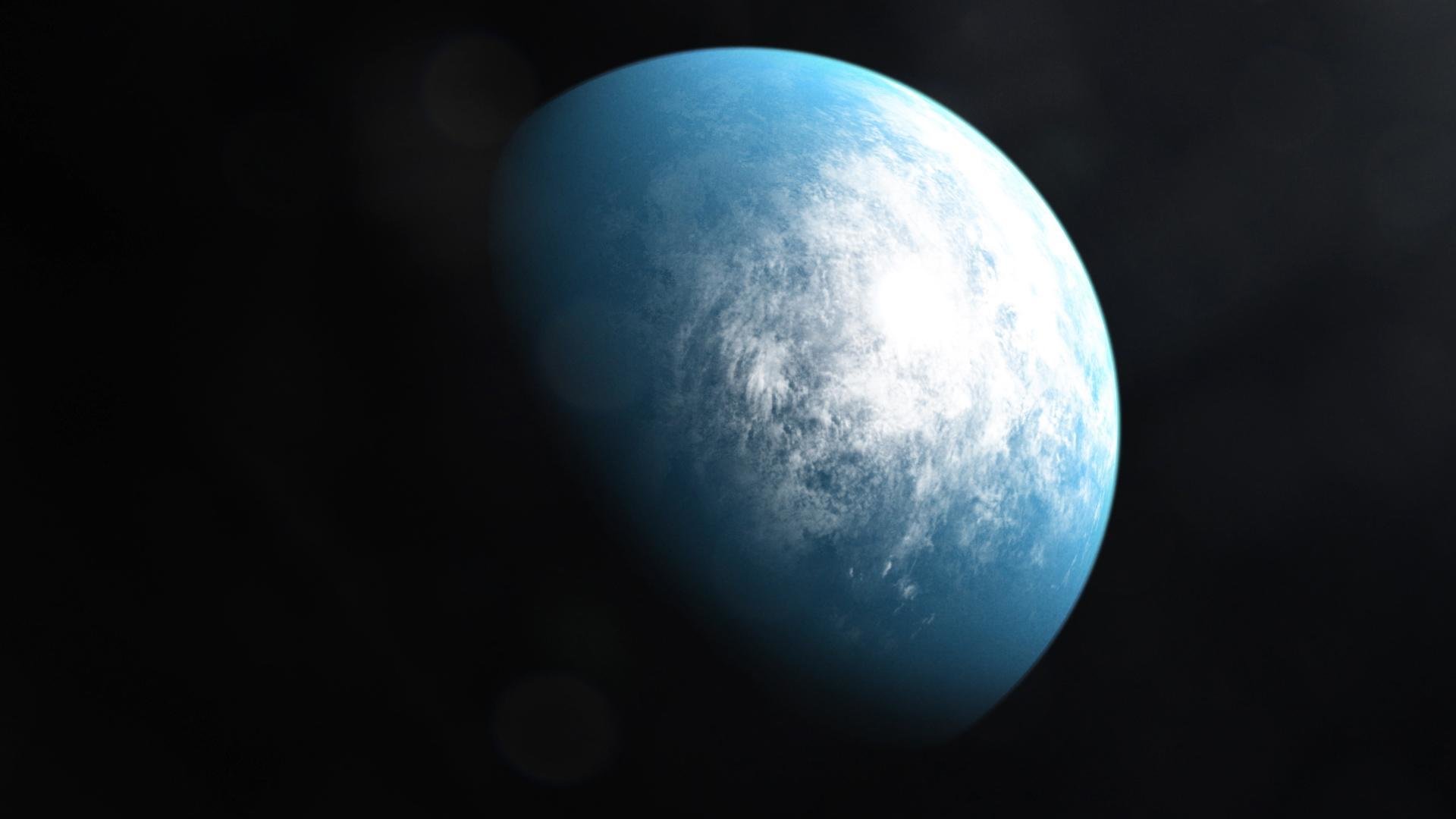
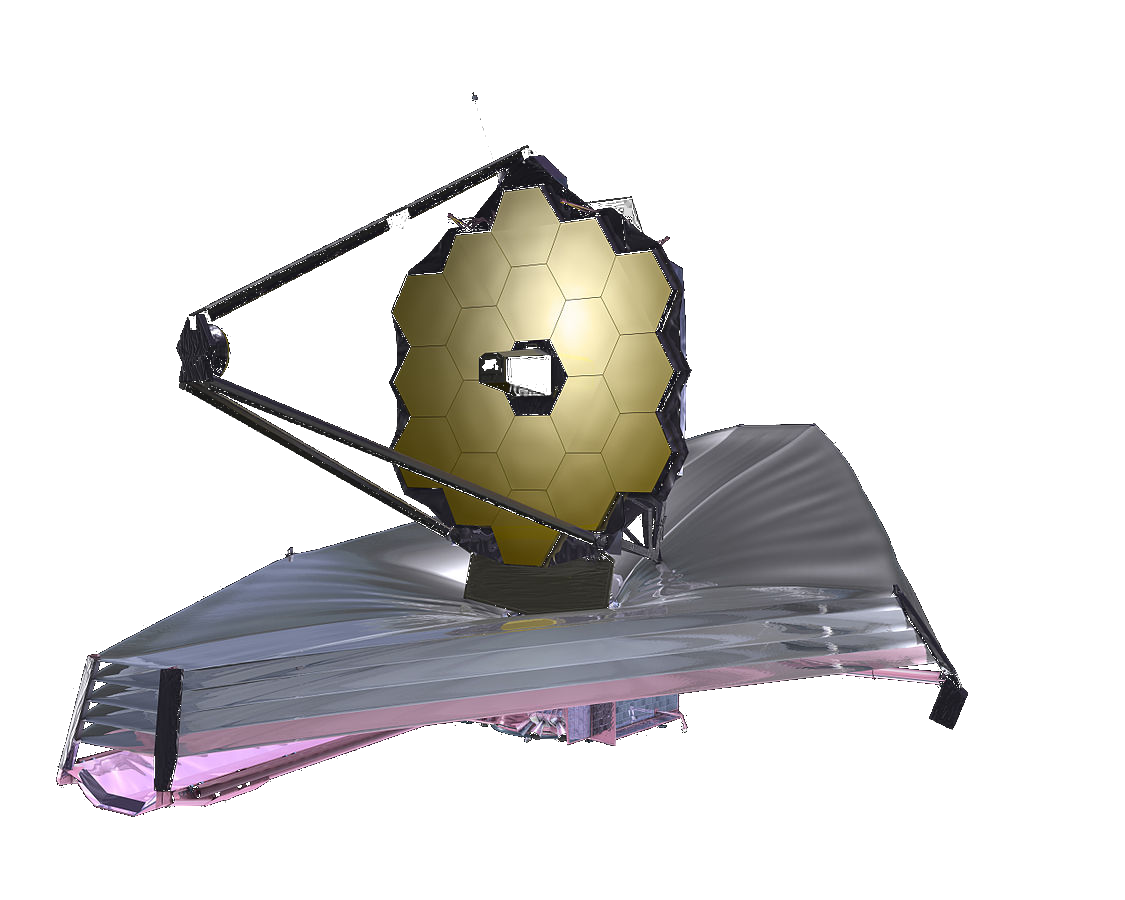
100 light years away, on an Earth-like exoplanet...

...an alien civilization launches an infrared space telescope

They spot the "pale blue dot" that is our planet
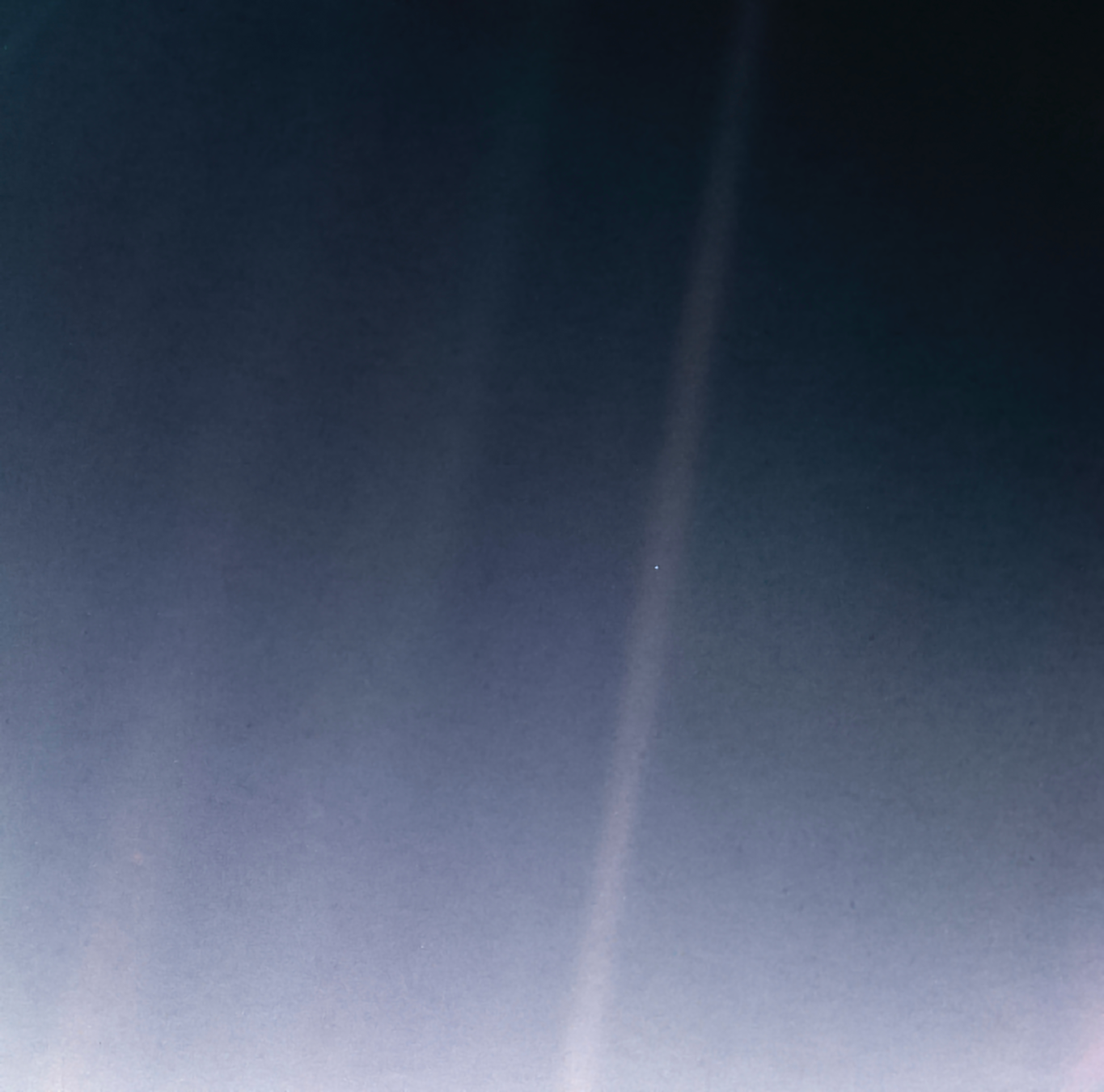
Peering into our atmosphere...
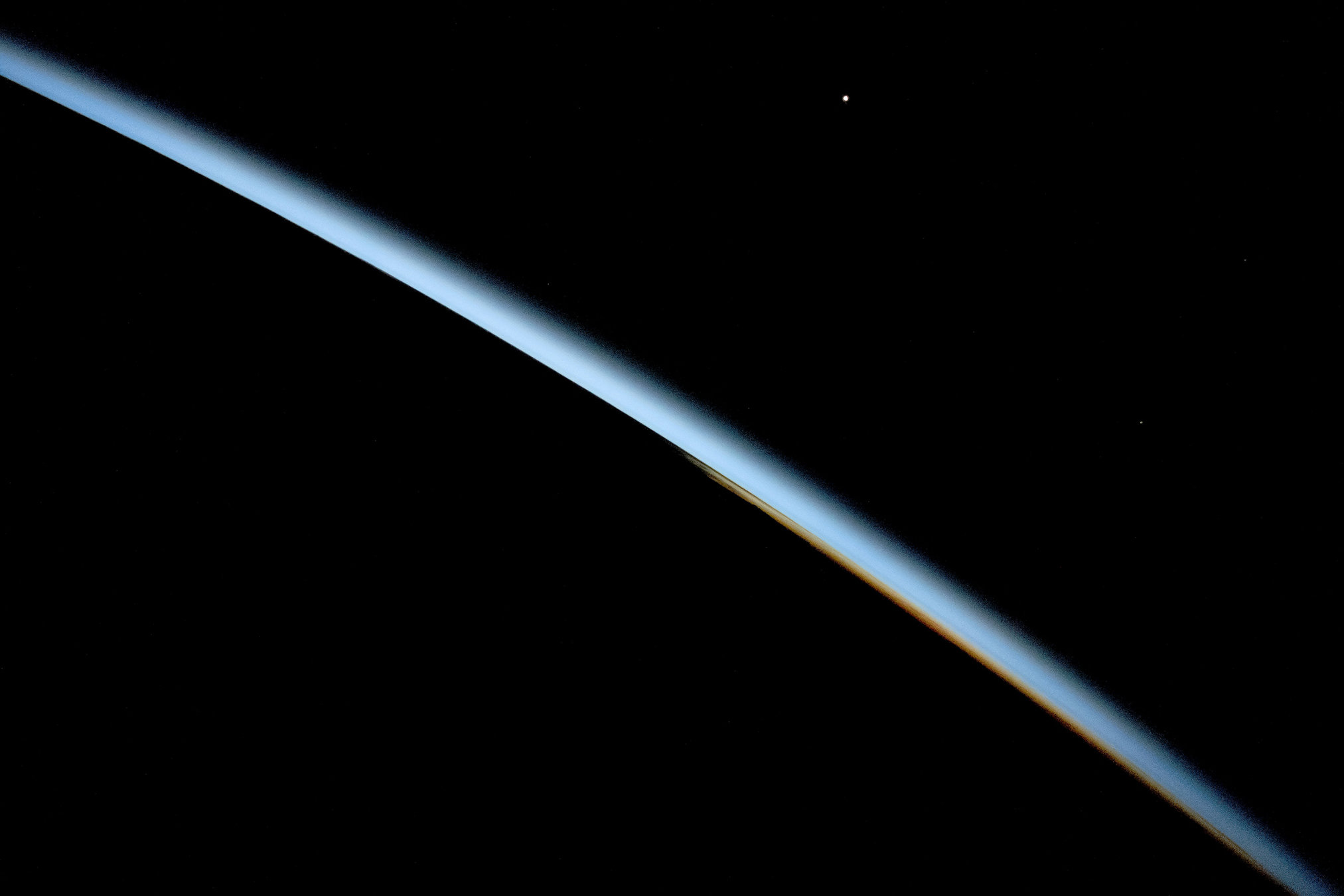
...what do they discover?

We are not alone!
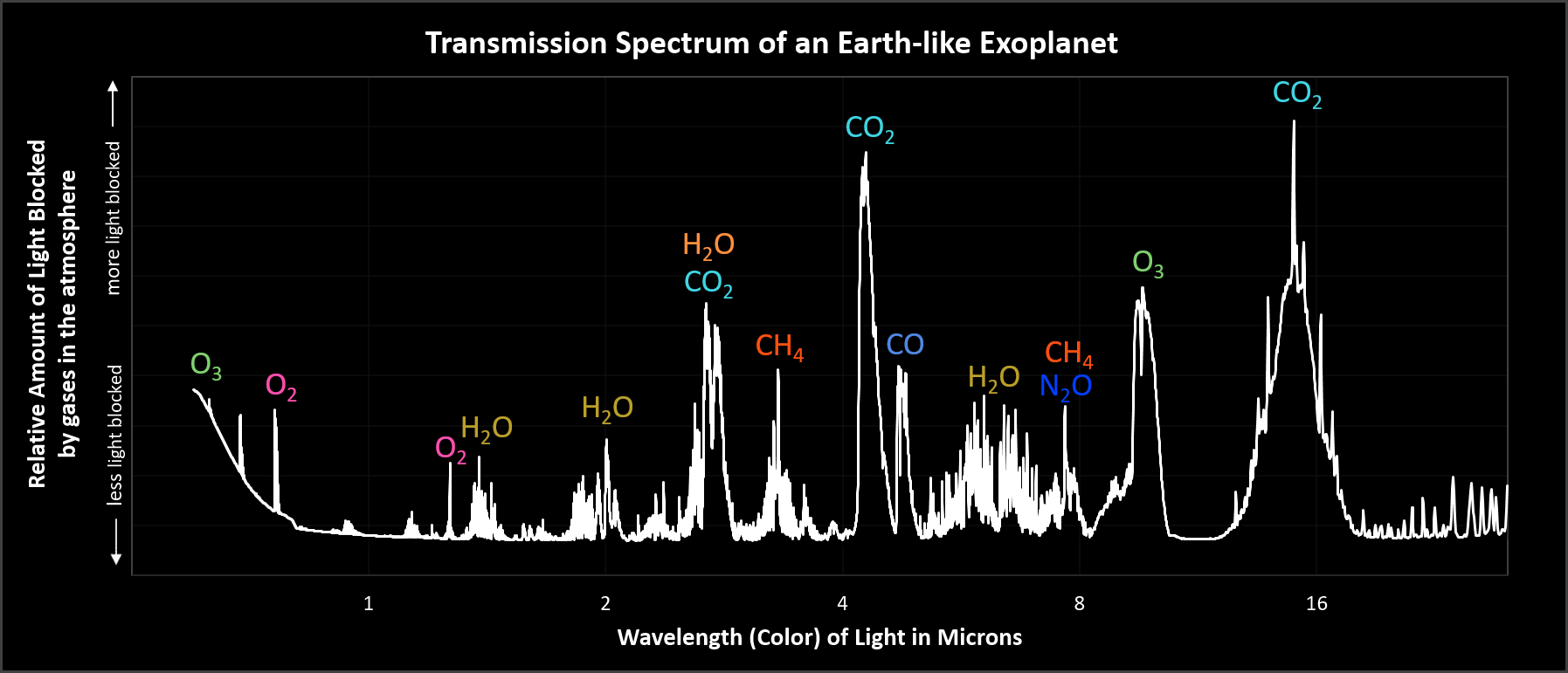
Chemical disequilibrium = evidence for life
Chemical disequilibrium
Krissansen-Totton et al., 2018



But Earth's atmosphere remains out of equilibrium
- Life keeps it that way!
- ~50% of oxygen produced by microbes!
Center of the Earth System
- Primary production
- Nutrient cycling
- GHG production / consumption
- Influence geology, climate, chemistry, and biology of Earth
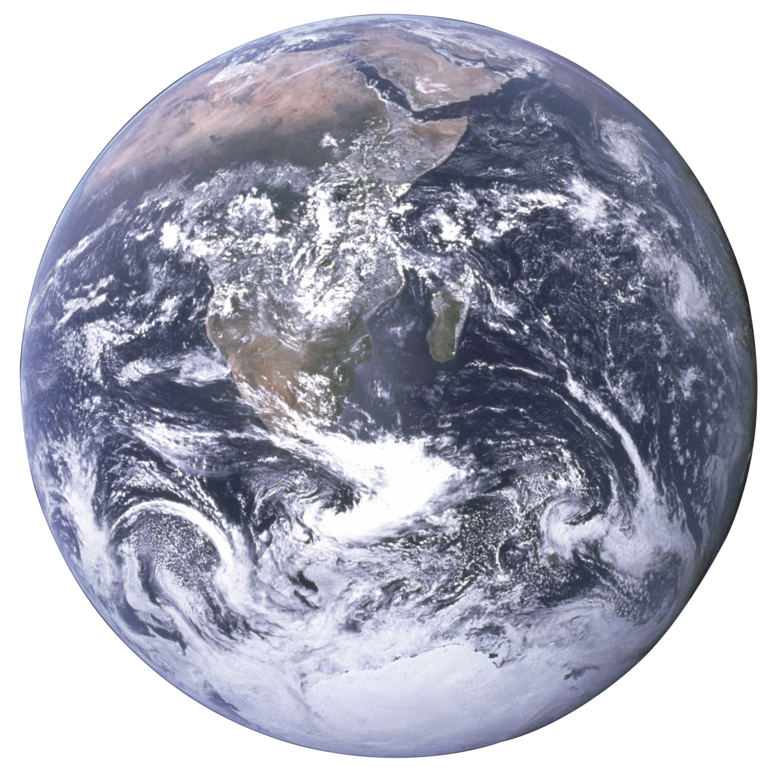
Microbial life

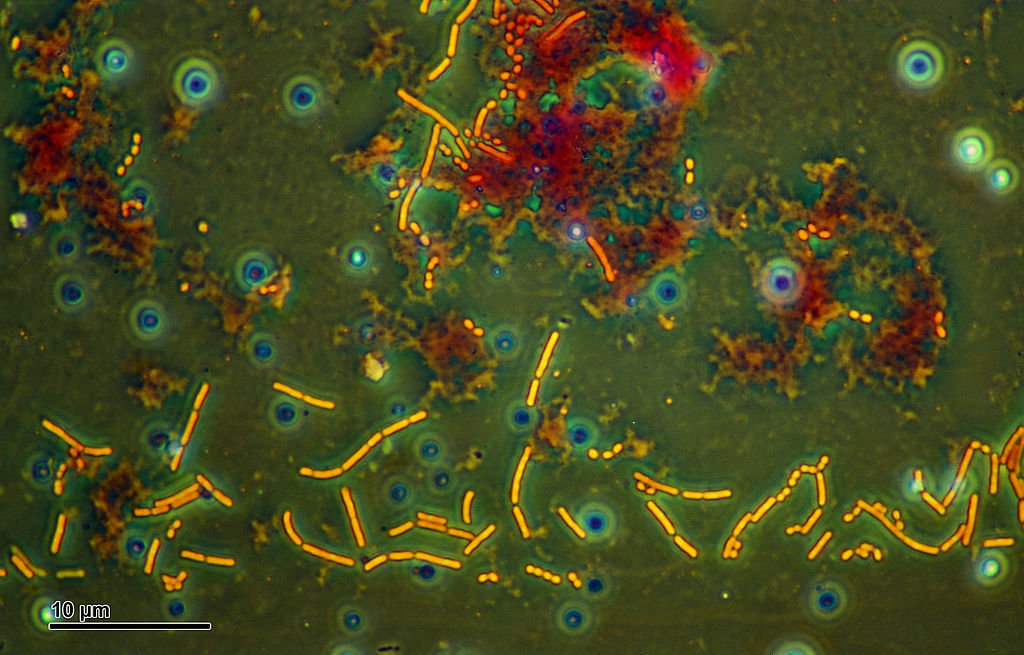
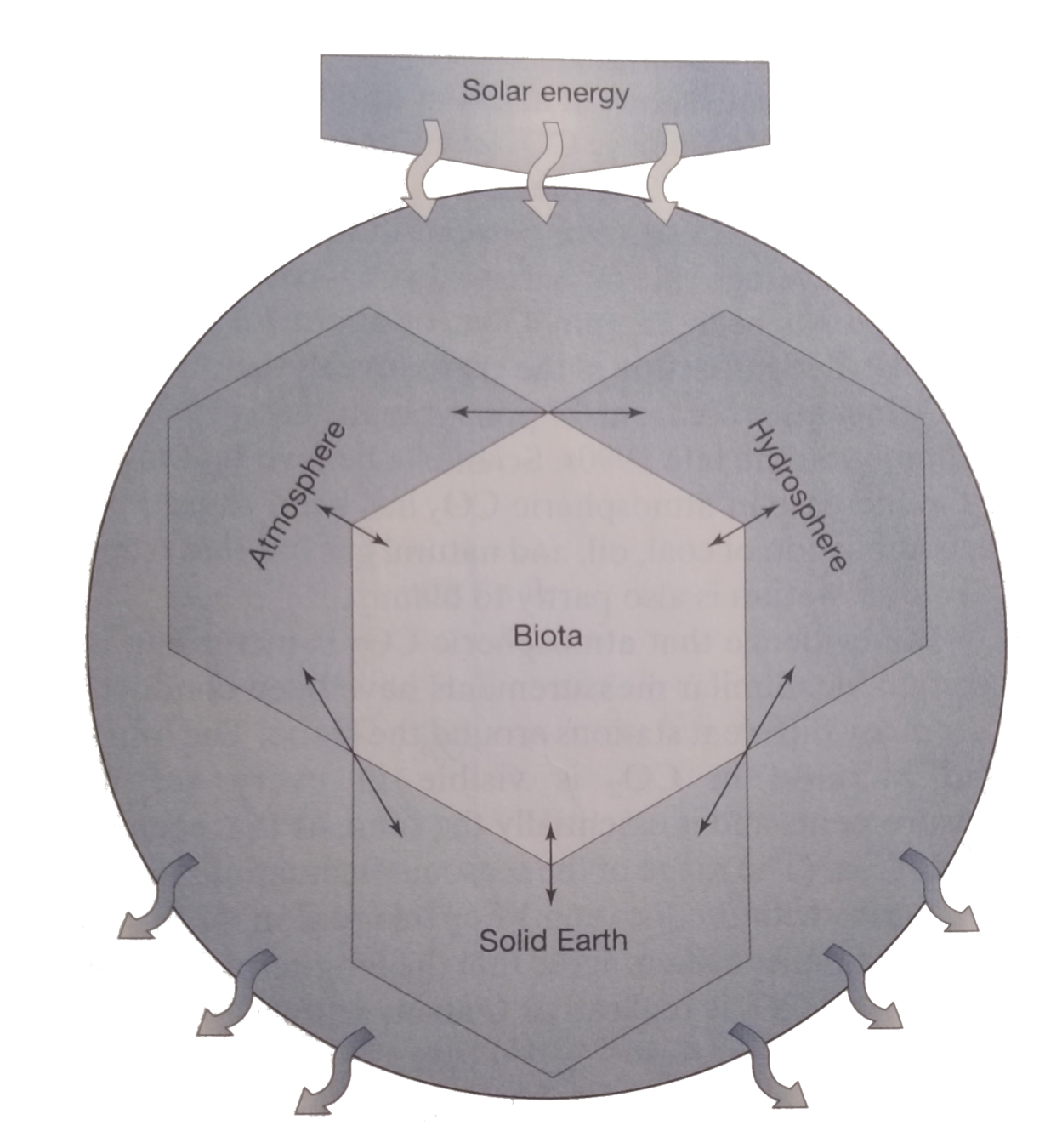
(Micro)
Kump, Kasting, and Crane, The Earth System
How do microbial communities* influence the Earth System**,
and vice-versa***?
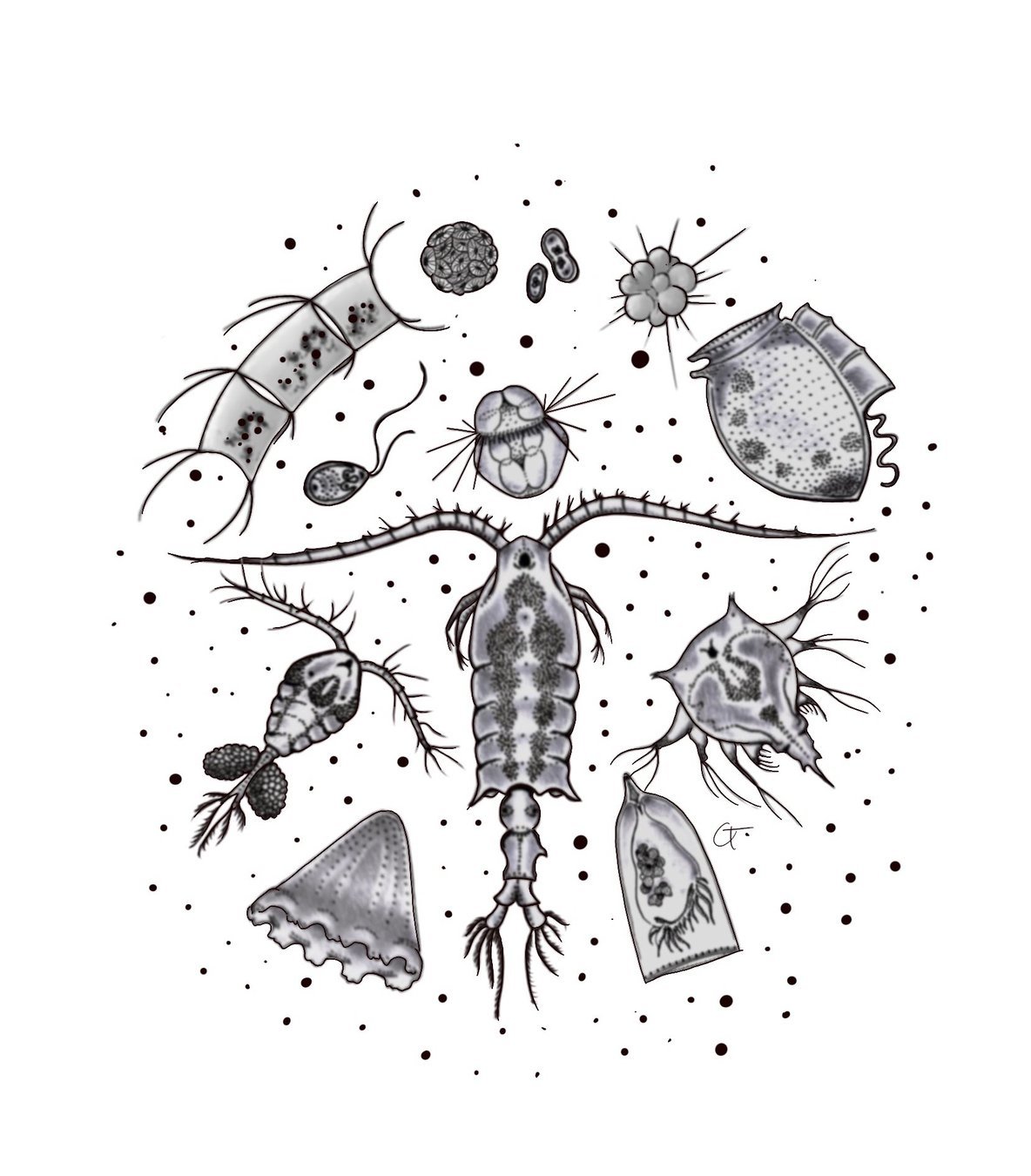
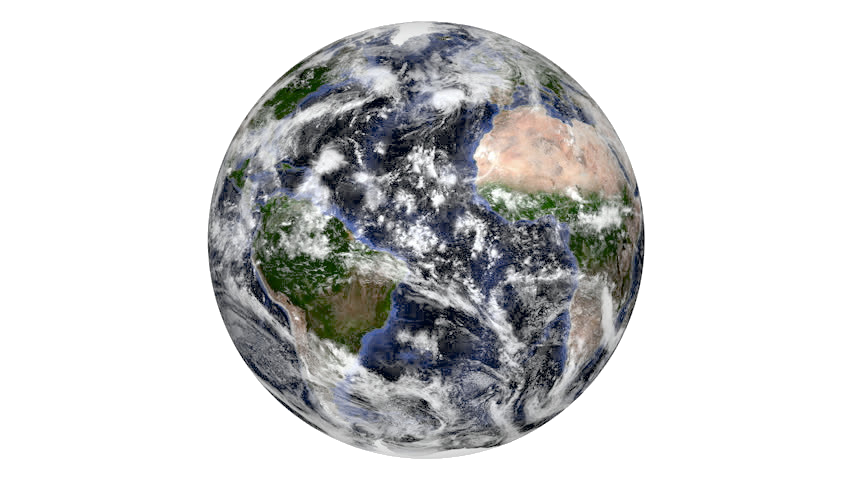
*whole community methods

**primary productivity, elemental cycling

***effect of anthropogenic pressure on ecosystems
Microbe art: @claudia_traboni
My core research question
Microbiology
Environmental science
Bioinformatics
Evolution, population genetics
Ecosystem modelling, global change biology
Microbial ecology, biogeochemistry
3 disciplinary "pillars"
Microbiology
Bioinformatics

Pillars support core research question
Environmental science
Long term vision: A lab that links microbial diversity & biogeochemical function in the context of global ecosystem change with modern 'omics-enabled techniques
'omics => detailed research questions
-
Which microbes catalyze specific bio(geo)chemical processes?
- What proteins / pathways are responsible?
- What are the rates / efficiency of these processes?
- What is the structure & function of the whole ecosystem, and how is it changing?
- How does speciation / evolution affect these processes?

DNA sequencing is now low-cost...


...allowing us to sequence environmental "microbiomes"
A model ecosystem unites pillars behind common goal
Ecology & environmental science
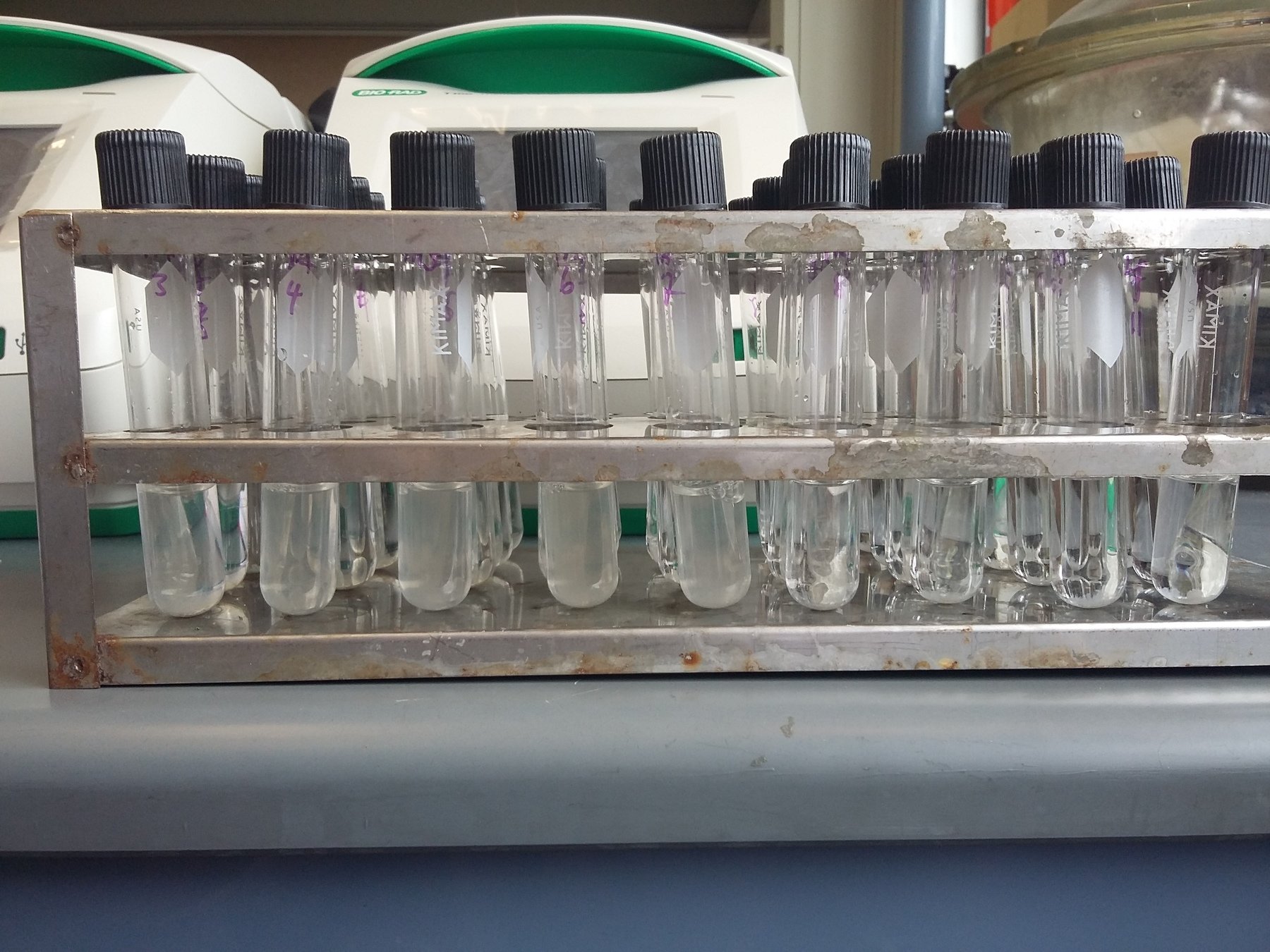
Microbiology
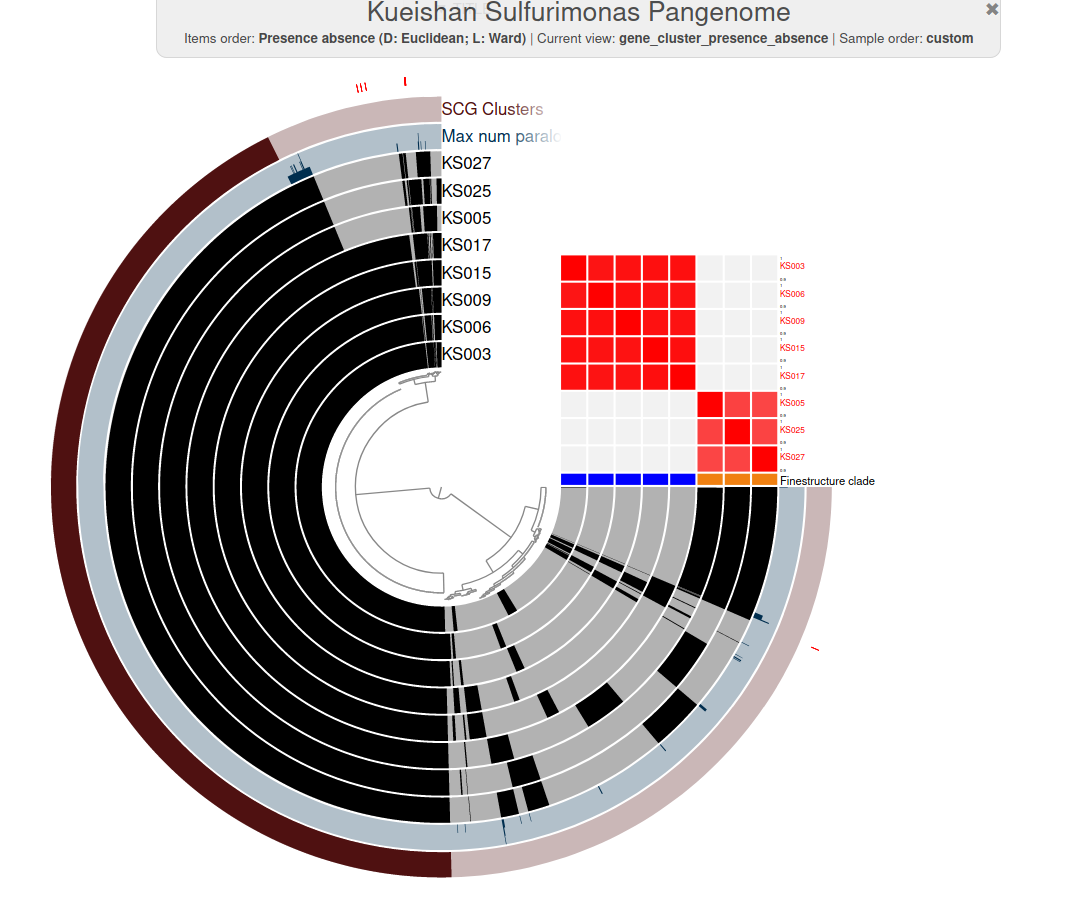
Bioinformatics

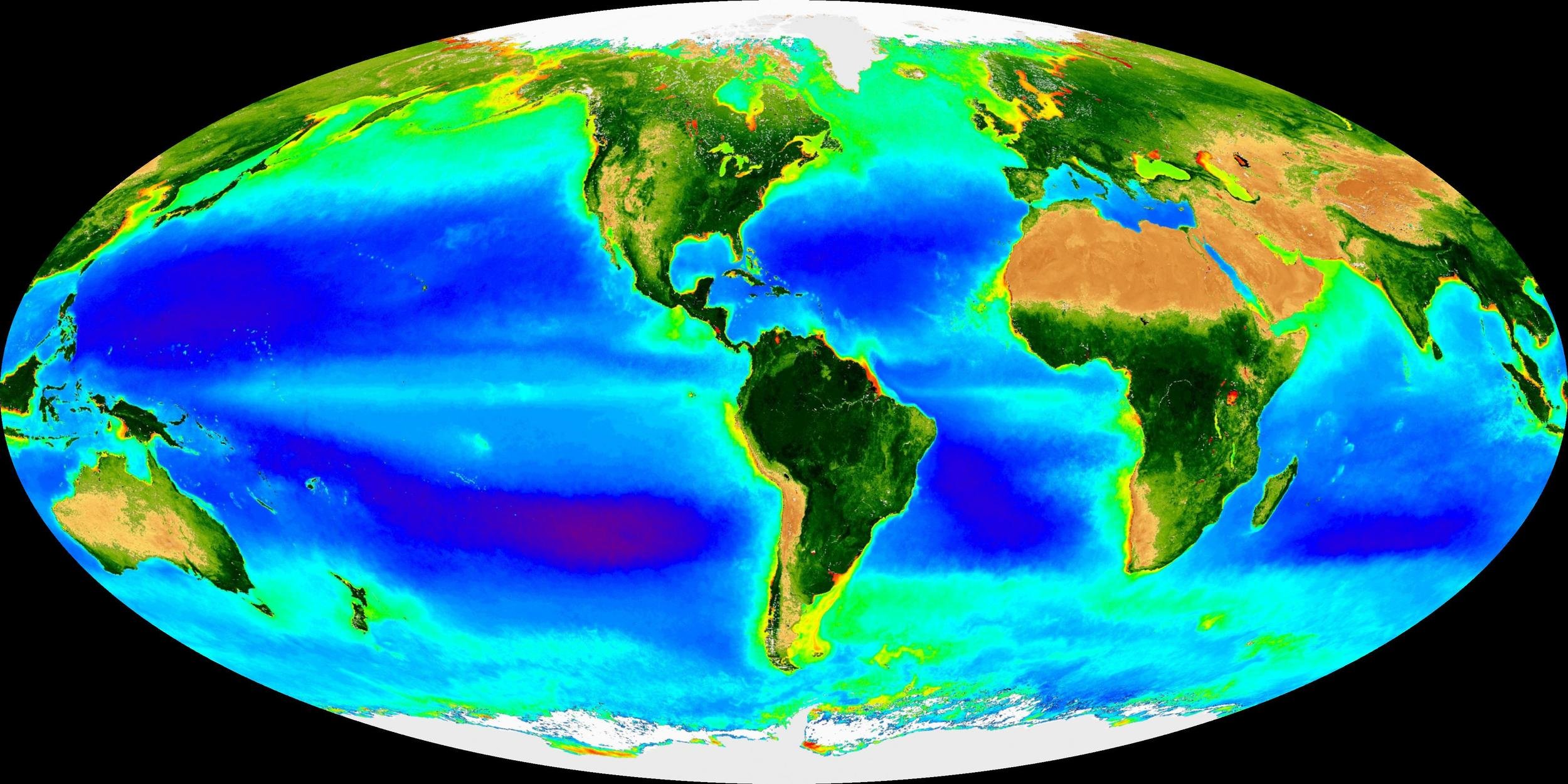


Open ocean systems
- Bathymetry restricts mixing, resulting in persistent euxinia
- High diversity of chemical conditions across a few metres
- Proxy for ancient Earth
- Model for future climate change impacts
An "Eco-Genomic Observatory" in W. Whycocomagh Bay
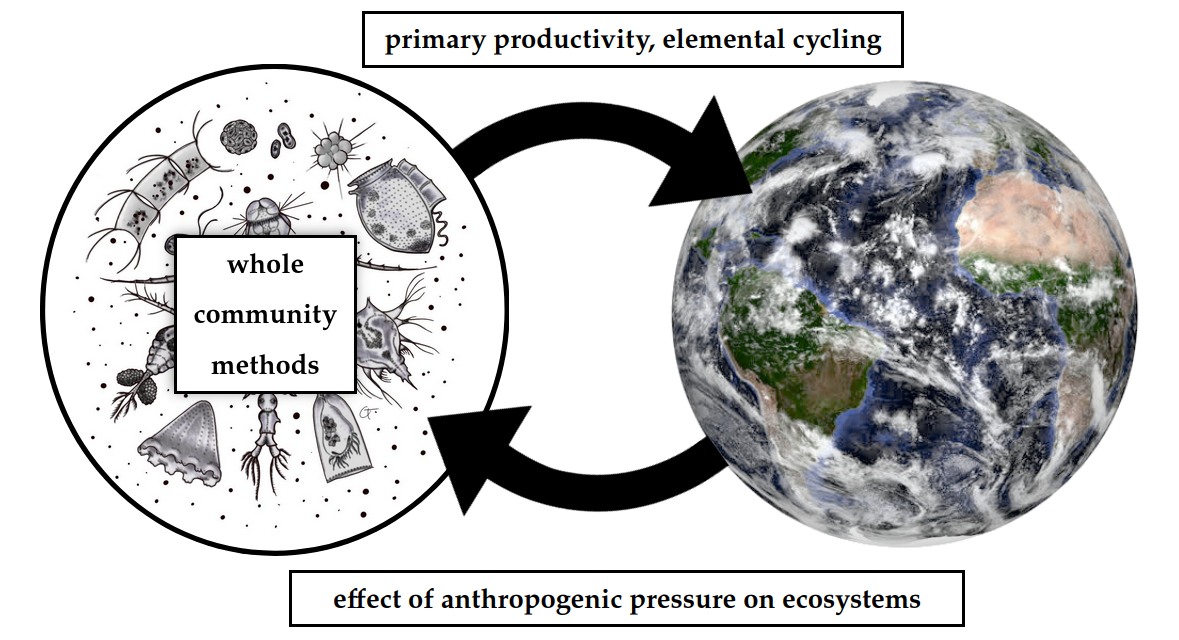

Whycocomagh Bay (WB)

-
3-domain metabarcoding measures abundance of microbial life across space / time
- Comprehensive (primers target all cellular life)
- Sensitive with deep sequencing
- Specific with "denoising" algorithms




Microbe art: @claudia_traboni
Mapping ecosystems with metabarcoding



3-domain metabarcoding guides application of more
advanced techniques
Taxa-specific activity






- Students collect microbial "herbaria":
- Barcoding => community profile
- Students identify organism of interest, propose to:
- Visualize with FISH and/or
- Attempt to cultivate
- Preserve material in "Biobank"
- "Microbial natural history":
- Encourage new scientists, provide material for projects
- Many local environments (e.g. WB, Antigonish Harbour)
- Outreach opportunities
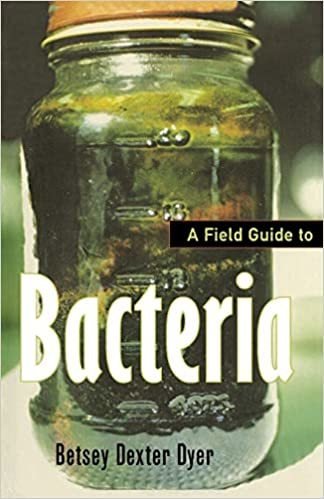
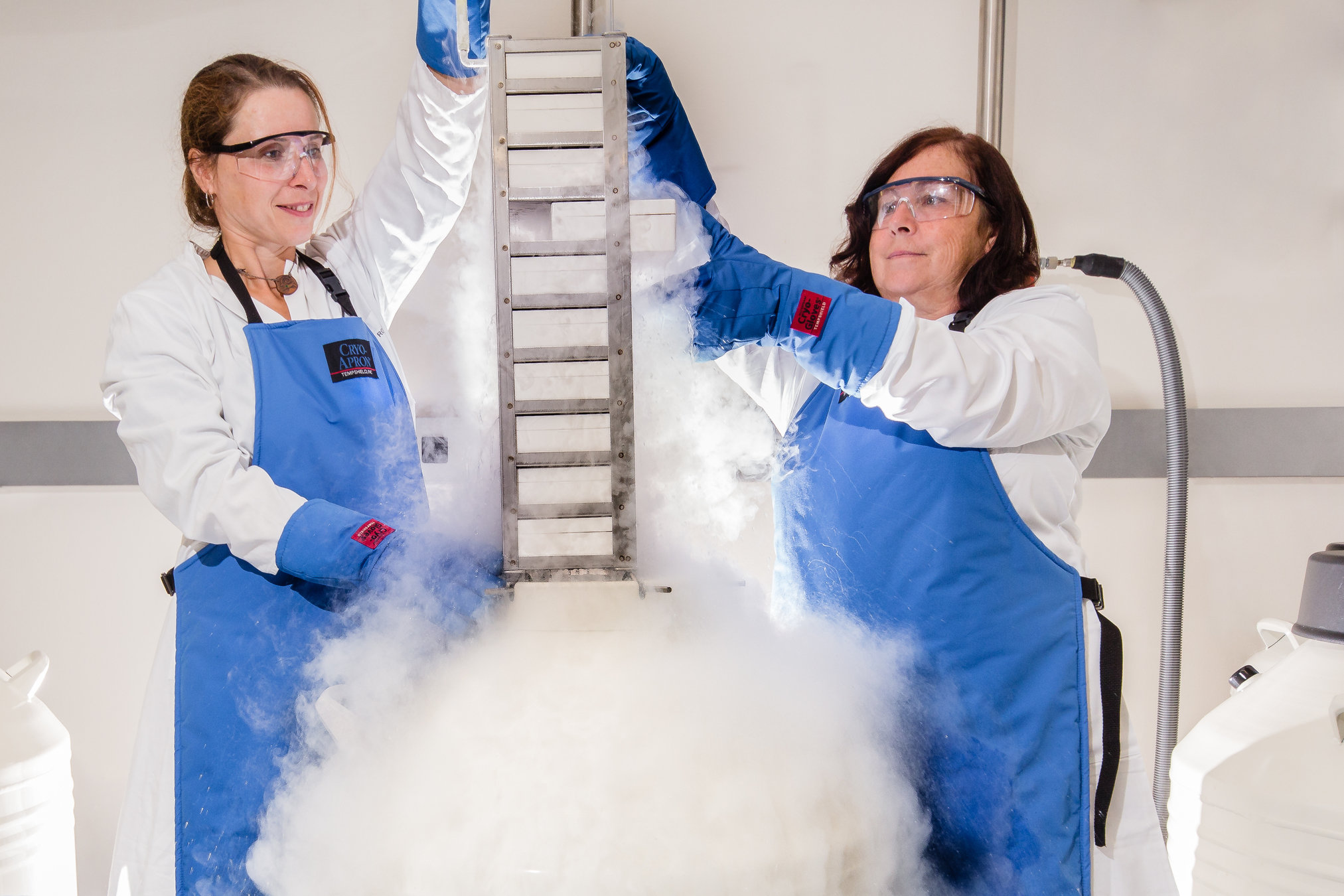
Native Microbiota to train/recruit students

"Biobank" (collected as often as possible from student projects / field work)
Biobanking supports iterative research
Whycocomagh Bay

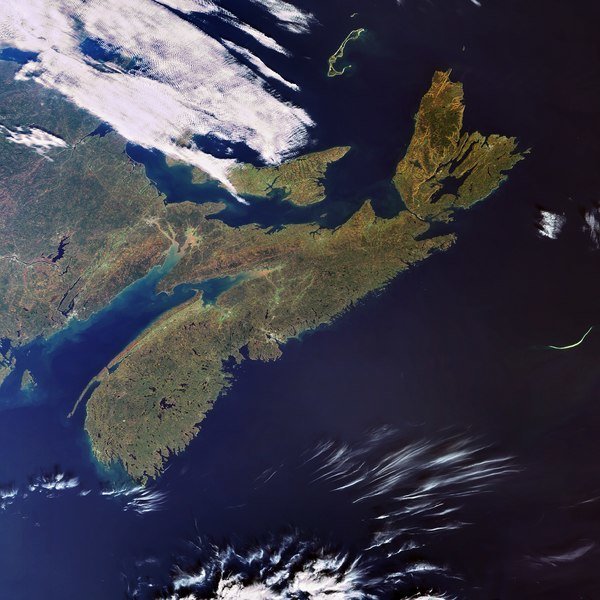


Viable cells
DNA
RNA
Water
T/S/Chl./Nut.
Fixed cells
Barcoding

Core environmental data

Projects inspired by environmental data

Cultivation
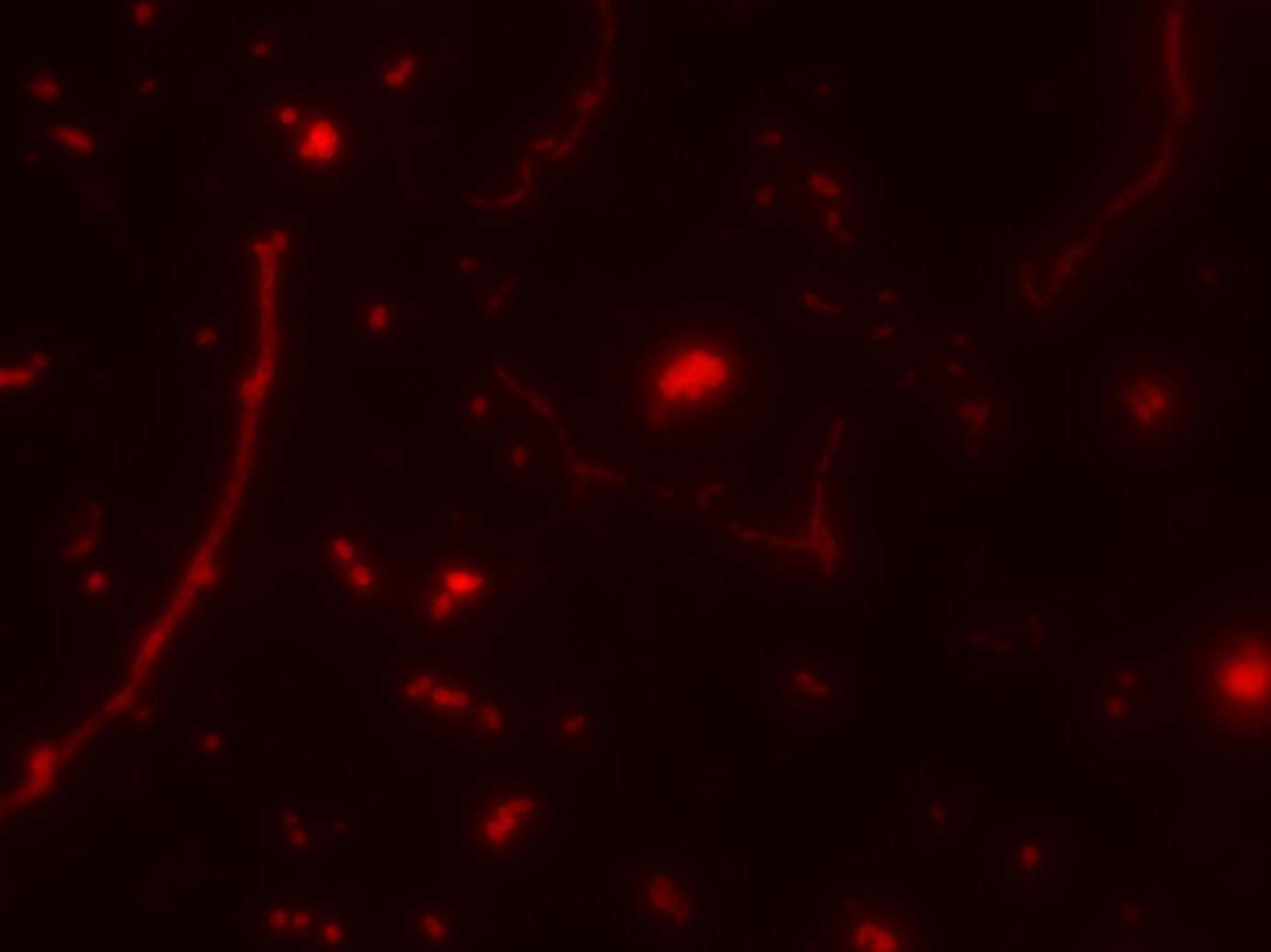
HCR-FISH
???
'omics

Whycocomagh Bay / Antigonish Harbour
Products
Research
Teaching / mentoring
Site
Standardized methods for microbial observations in context of physical/chemical environment
"Biobank" including DNA/RNA, viable /preserved cells, 'omics data
Native Microbiota CURE for training in methods
Undergrad-level projects
Graduate-level projects
Local, international collaborations
Monitoring of HABs, water quality
Climate change impacts
Pure research in microbial ecology
Model systems + biobanking
In silico
Laboratory
Field work
Holistic ecosystem knowledge
Reductionist (multiple entry points)
Interdisciplinary opportunities
Diverse entry points for students



How my research experience fits in at StFX
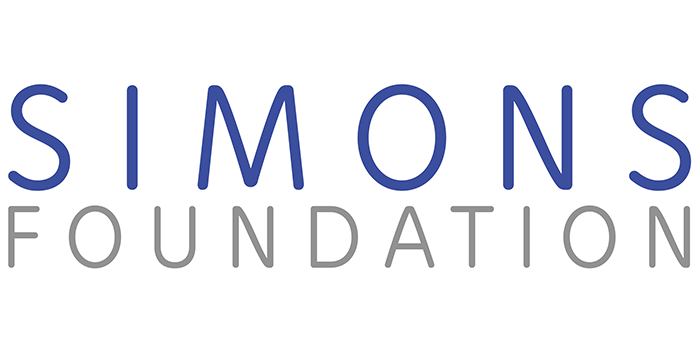

3. Current work





2. HK/Taiwan work




1. PhD work
Hydrothermal vent work & StFX (Part I: Woods Hole)




1. PhD work
Ecology & environmental science
Microbiology
Bioinformatics
Research question
- How do chemical / physical factors affect microbial growth and carbon fixation efficiency?
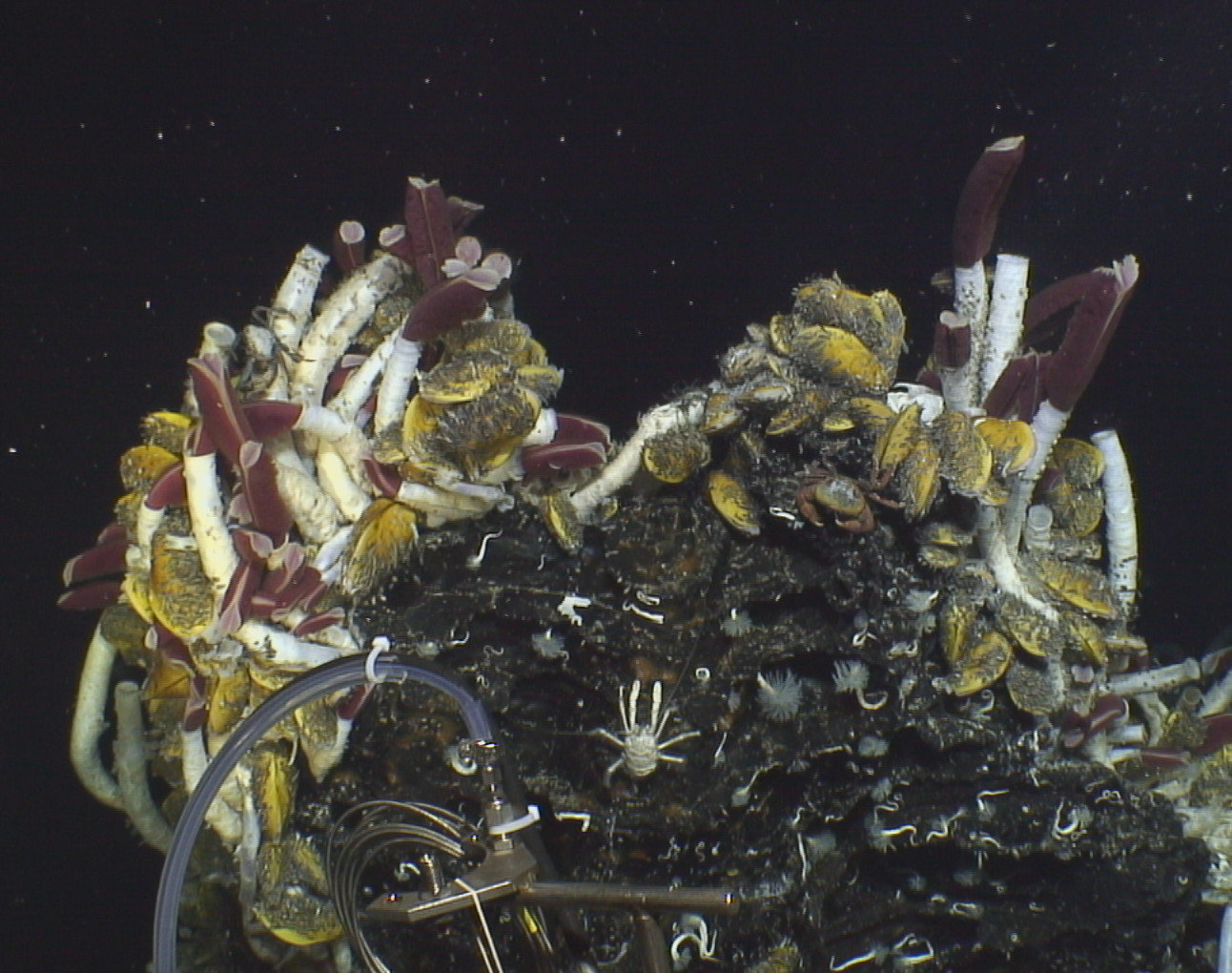
Deep-sea hydrothermal vents: Oases fueled by geochemical energy


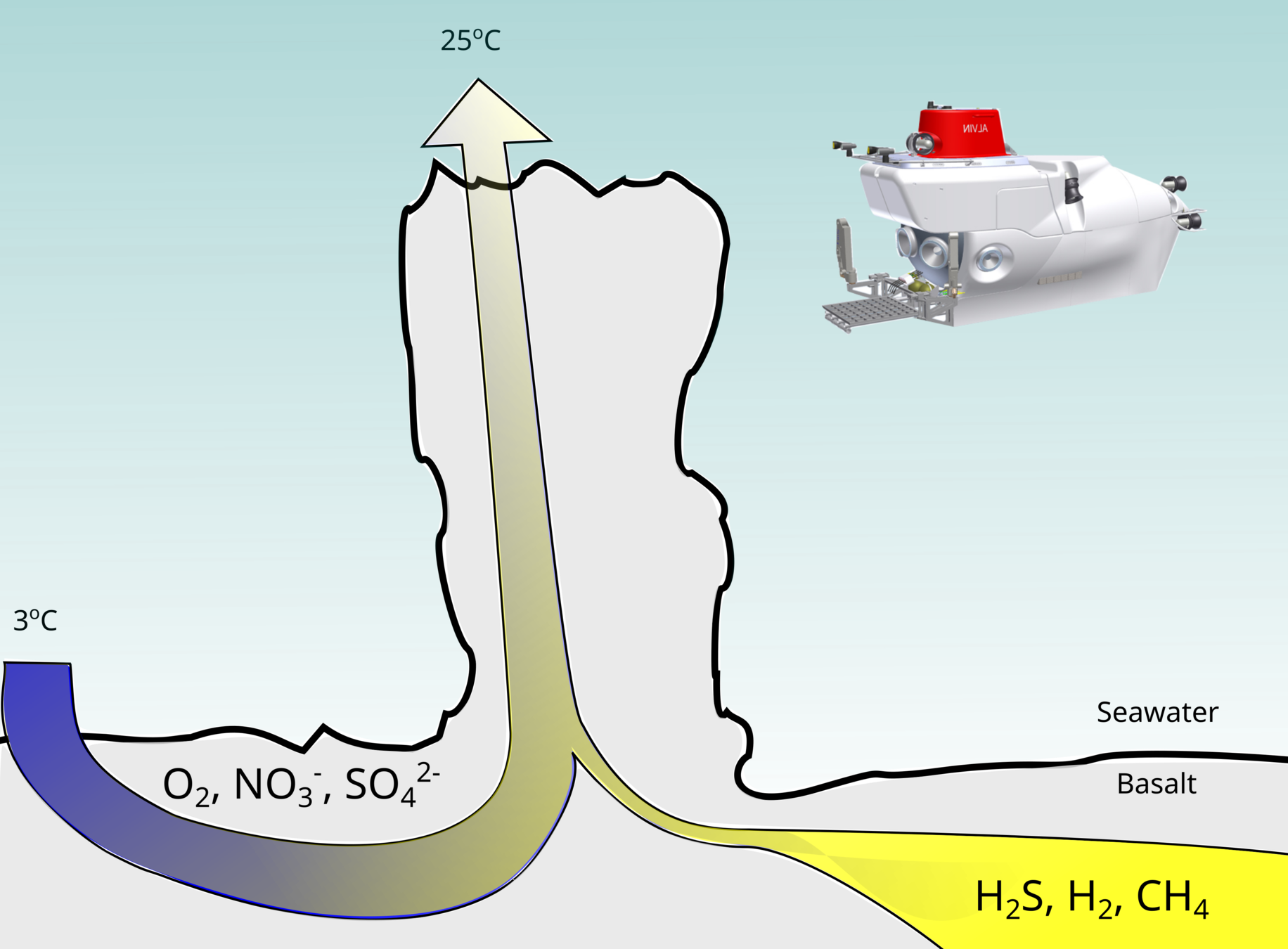
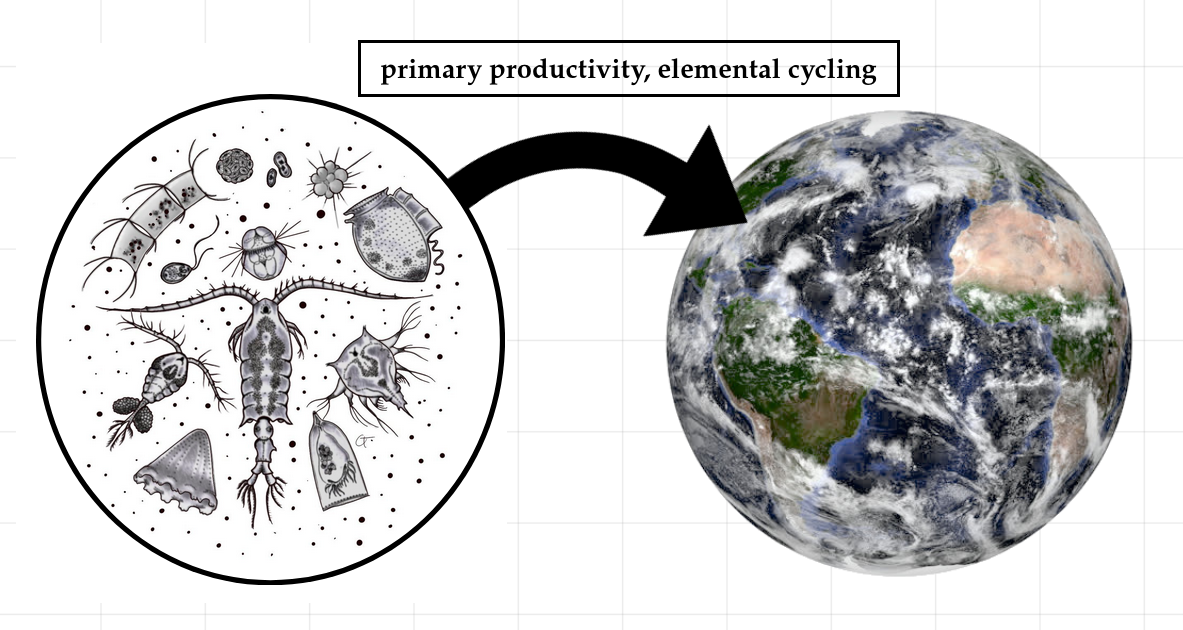
- Developed novel high-pressure incubations
- Quantified bulk and single-cell CO2 fixation
- Used DNA to measure community change

FISH
SIP
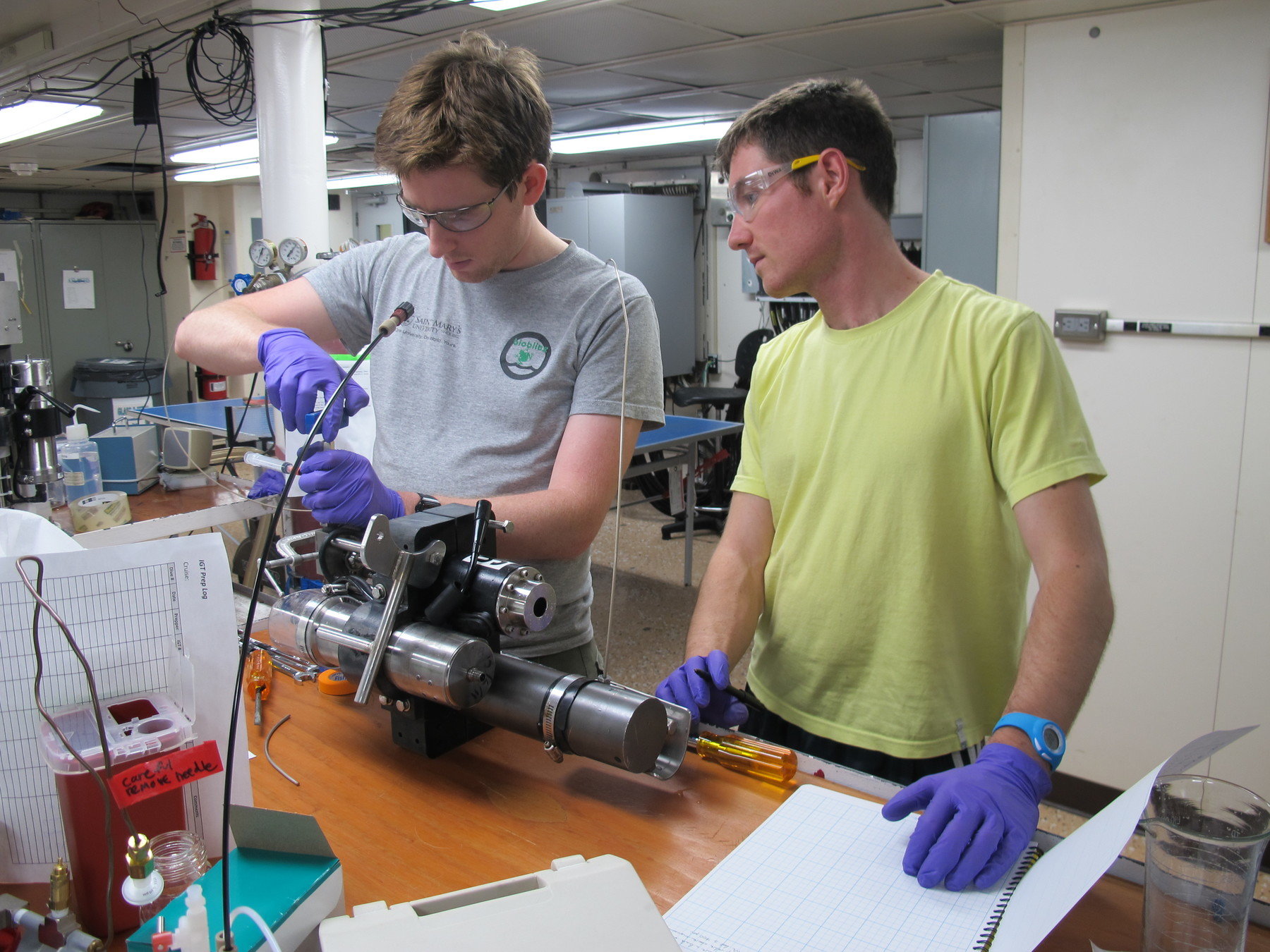


'omics data in an experimental, biogeochemical context
'omics data in experimental context


Example student project #1
- What is the genetic basis of differential oxygen tolerance in hydrothermal vent microbes?
Advantages for mentees:
- Clear experimental & environ-mental context, data available
- Unique publication
- Implications for evolution over geological time scales
O2 caused major shift in community over ~ 24 h

Use single-cell genomes to investigate genetic basis of this response







2. HK/Taiwan work
Ecology & environmental science
Microbiology
Bioinformatics
Hydrothermal vent work & StFX (Part II: Hong Kong)
Research question and methods

1. Genomes from pure cultures
2. (Pan)genomic analysis with anvi'o

3. Diversity, evolution, biogeochemistry


- How does speciation affect an organism's biogeochemical role?

Genomics to biogeochemical insights
Plot made with anvi'o
Clade 1:
+ denit, + N2'ase
N source & sink
Clade 2:
- denit, + N2'ase
N source

Diagram = Li et al., 2018.

N2
- What characterizes a new genus of chemoautotrophs isolated from shallow-water vents in Taiwan?
Advantages for mentees:
- Fun, hands-on introduction to microbiology
- Impactful publication
- Could be extended with lab experiments, metagenomics, field work
- Many similar projects possible with "microbial dark matter"


Example student project #2
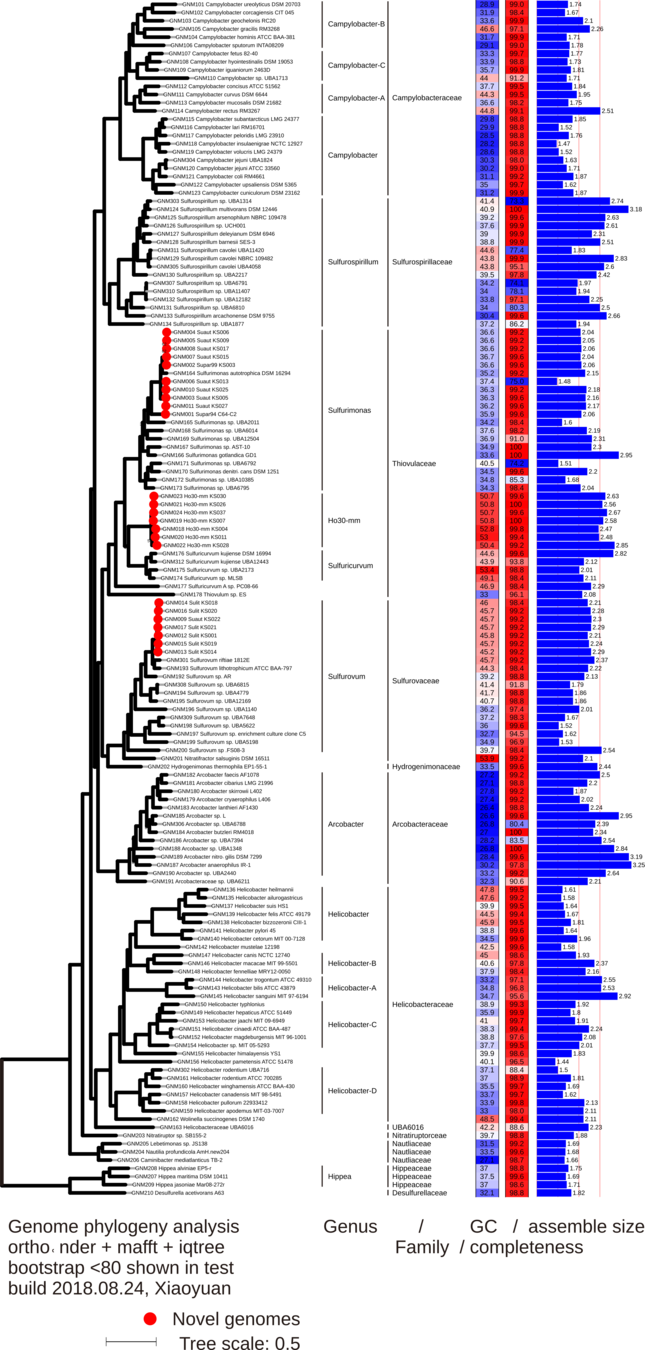
New genus
Xiaoyuan Feng, CUHK


1. Current work

Global-scale metabarcoding & StFX
Ecology & environmental science
Bioinformatics
- Unique global dataset from 2003 - present
- Part of international, interdisciplinary collaboration
- Potential further funding from Simons Foundation
- Potential to access sample material from collaborators




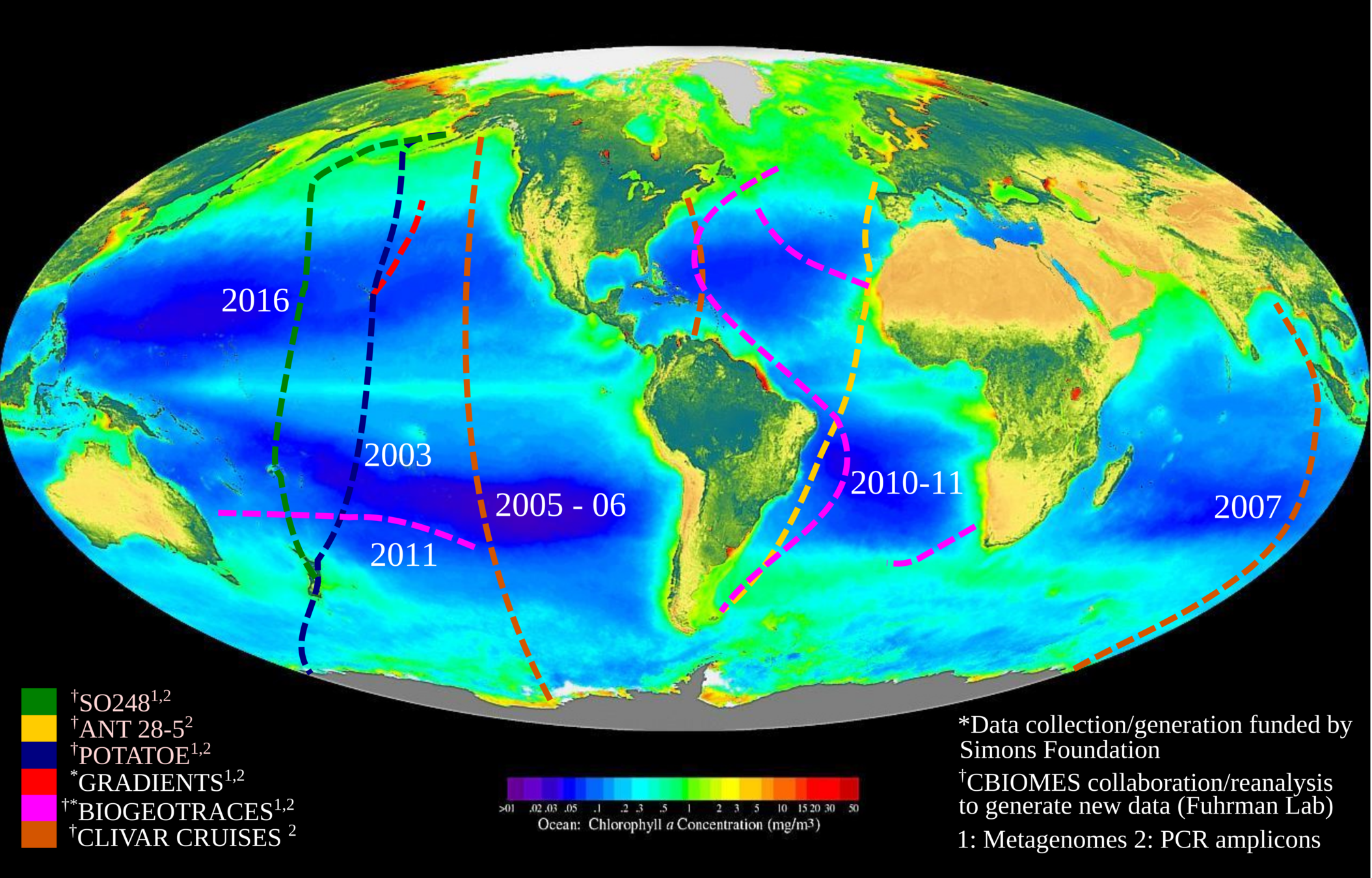
Global-scale metabarcoding & StFX
GRADIENTS cruise (yearly)
Research questions
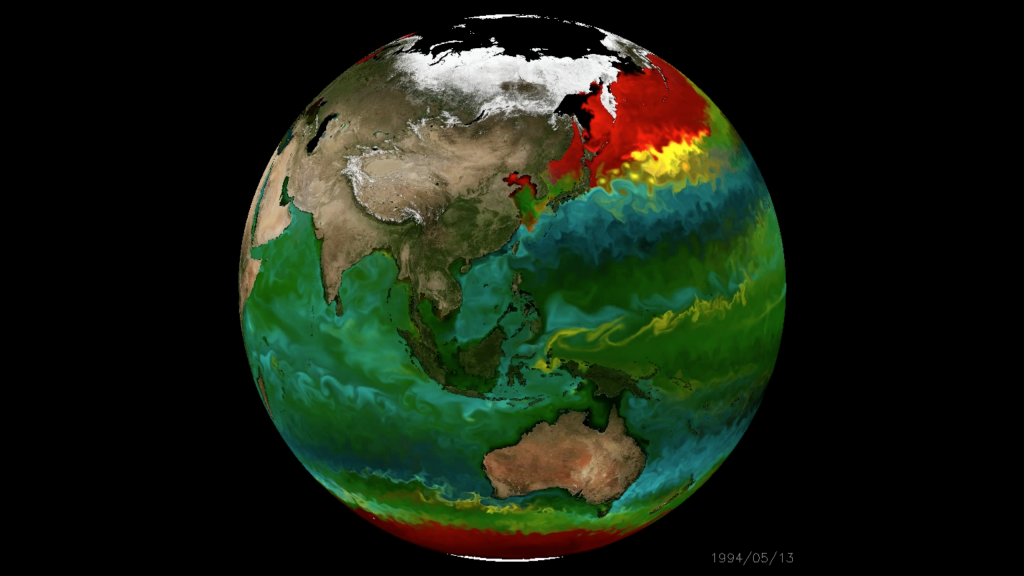
An in silico global phytoplankton model (DARWIN project, MIT)
- How robust are model predictions?
- What is the function of microbial "black box"?
- Can models and data help predict consequences of climate change?

- How well do imaging-based methods (flow cytometry, imaging flow cytobot) align with 3-domain metabarcoding?
Advantages for mentees:
- Simple but impactful
- Simons CMAP database makes possible
- Extend by mining global distribution data


Kalmbach et al. (2017), arXiv:1703.07309v1
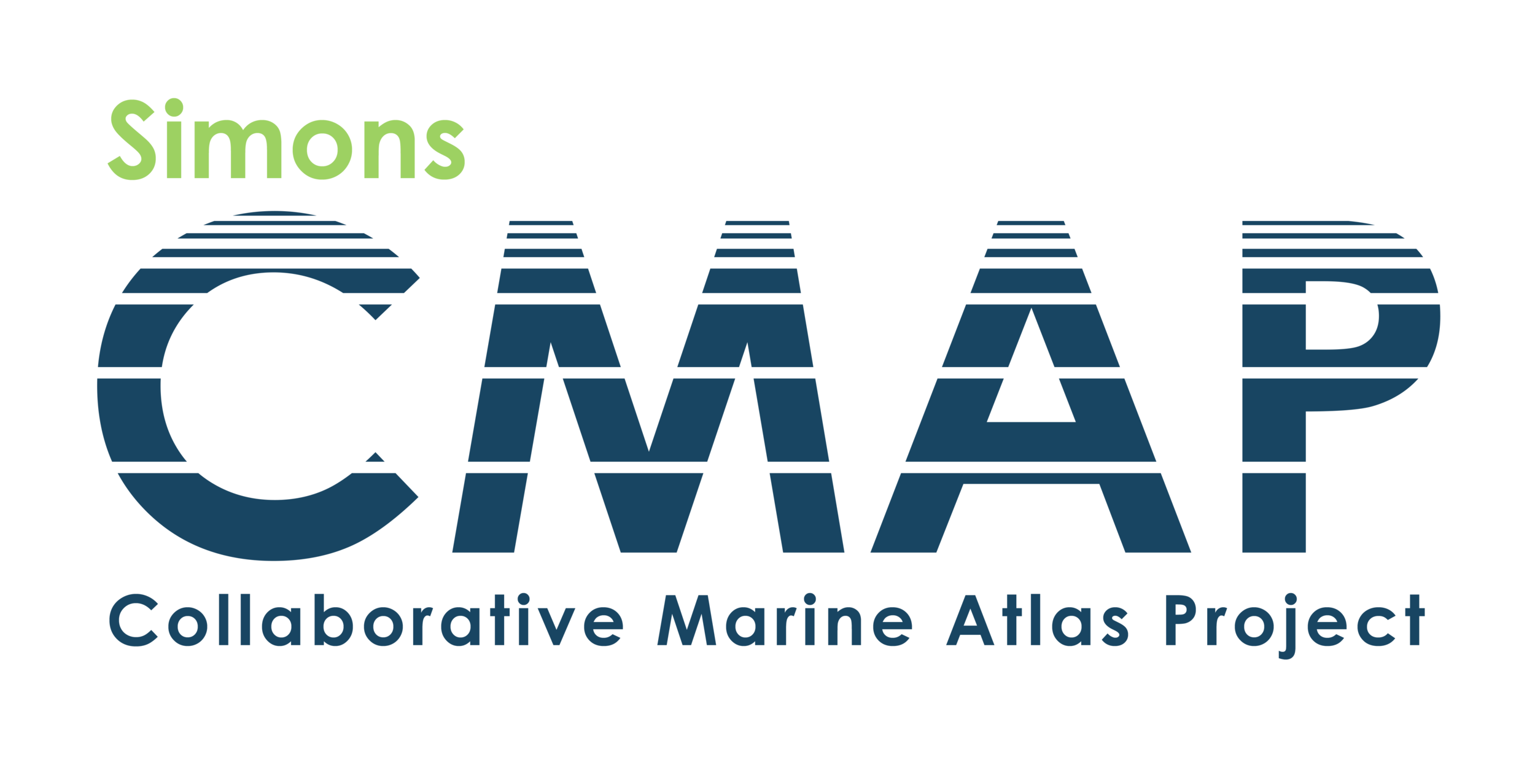
Example student project #3
A 5-year plan to build a lab at StFX
|
|
Years 1-2 |
|---|---|
|
|
Years 3-4 |
|
|
Year 5 onwards |

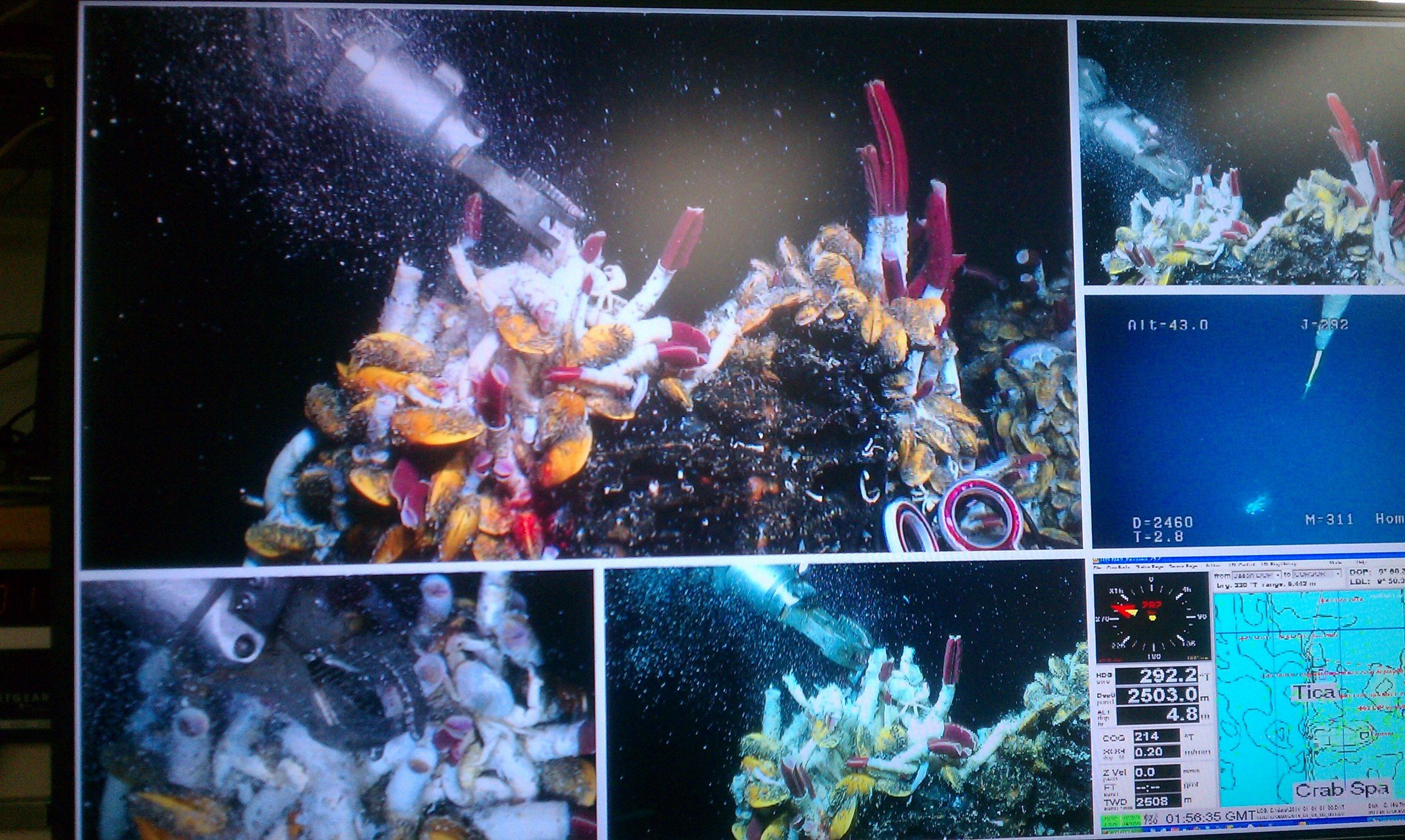
Long term vision: A lab that links microbial diversity & biogeochemical function in the context of global ecosystem change with modern 'omics-enabled techniques
|
|
Years 1-2 |
|---|---|
|
|
Years 3-4 |
|
|
Year 5 onwards |


- Start with "shovel-ready" projects
- Explore local "model system"
Y1-2: Research priorities
Y1-2: Equipment needs
|
|
Years 1-2 |
|---|---|
|
|
Years 3-4 |
|
|
Year 5 onwards |
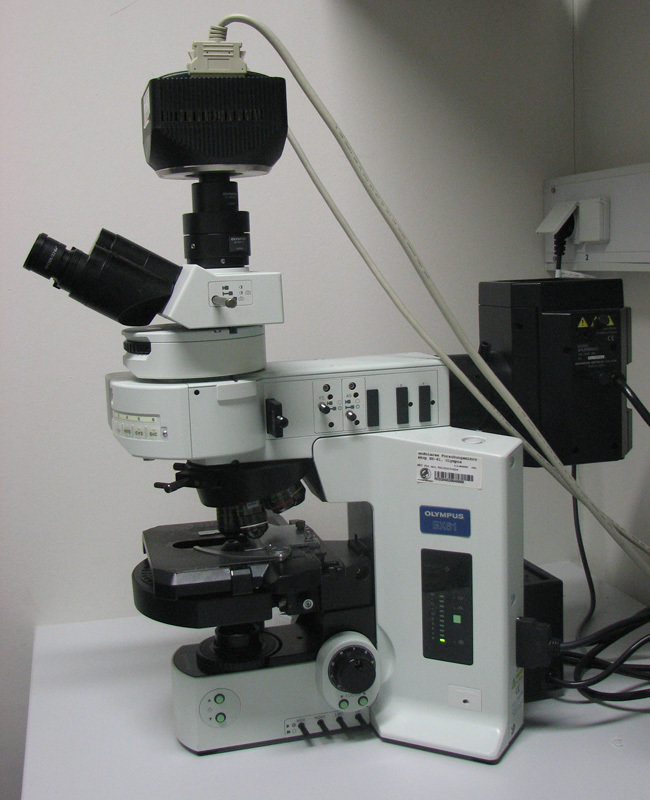
Epifluorescence microscope
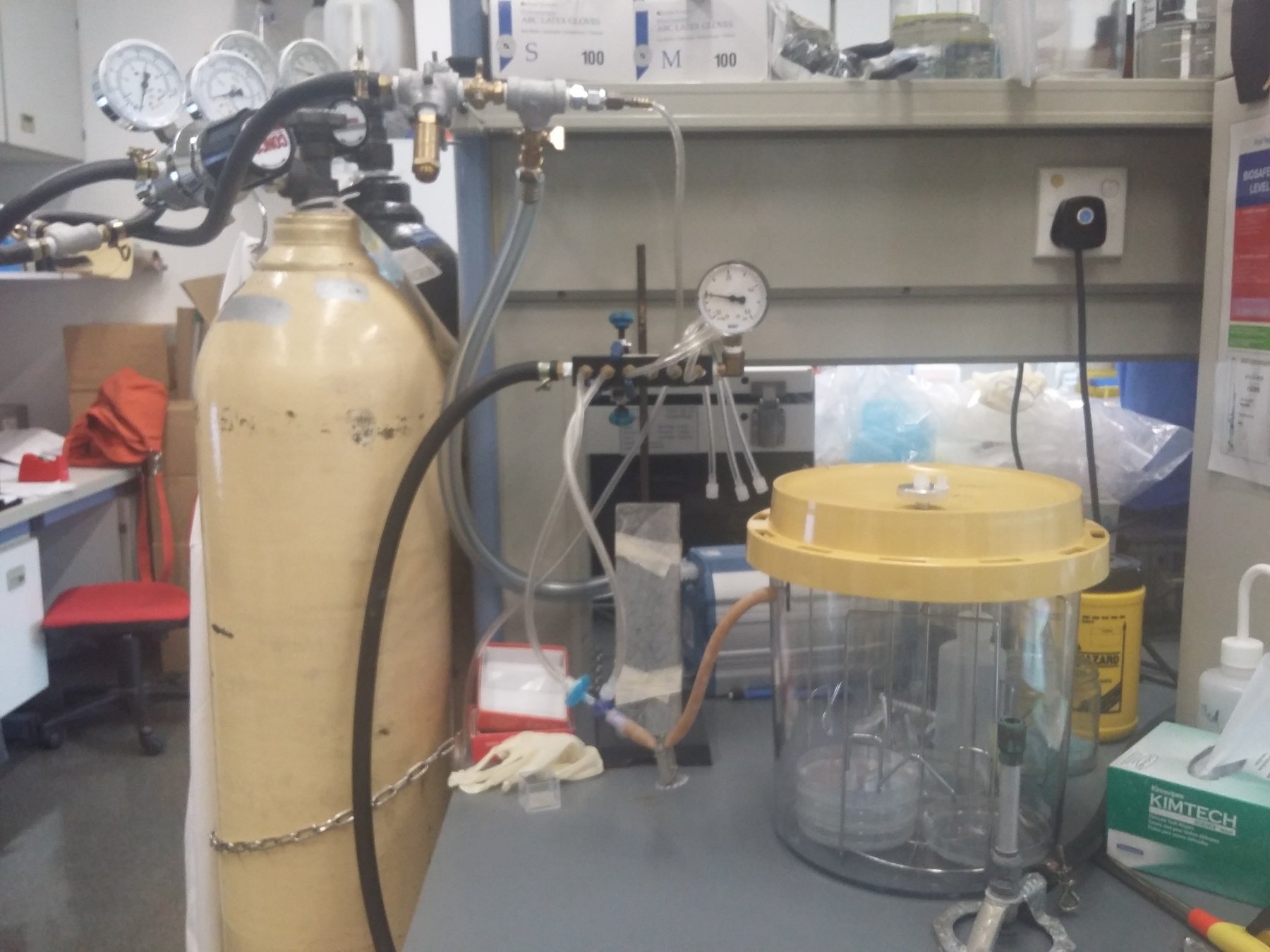
Microoxic cultivation equipment for non-pathogenic bacteria
CL2
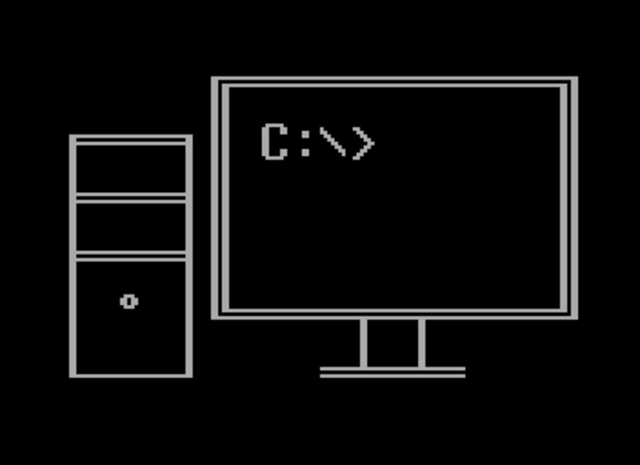
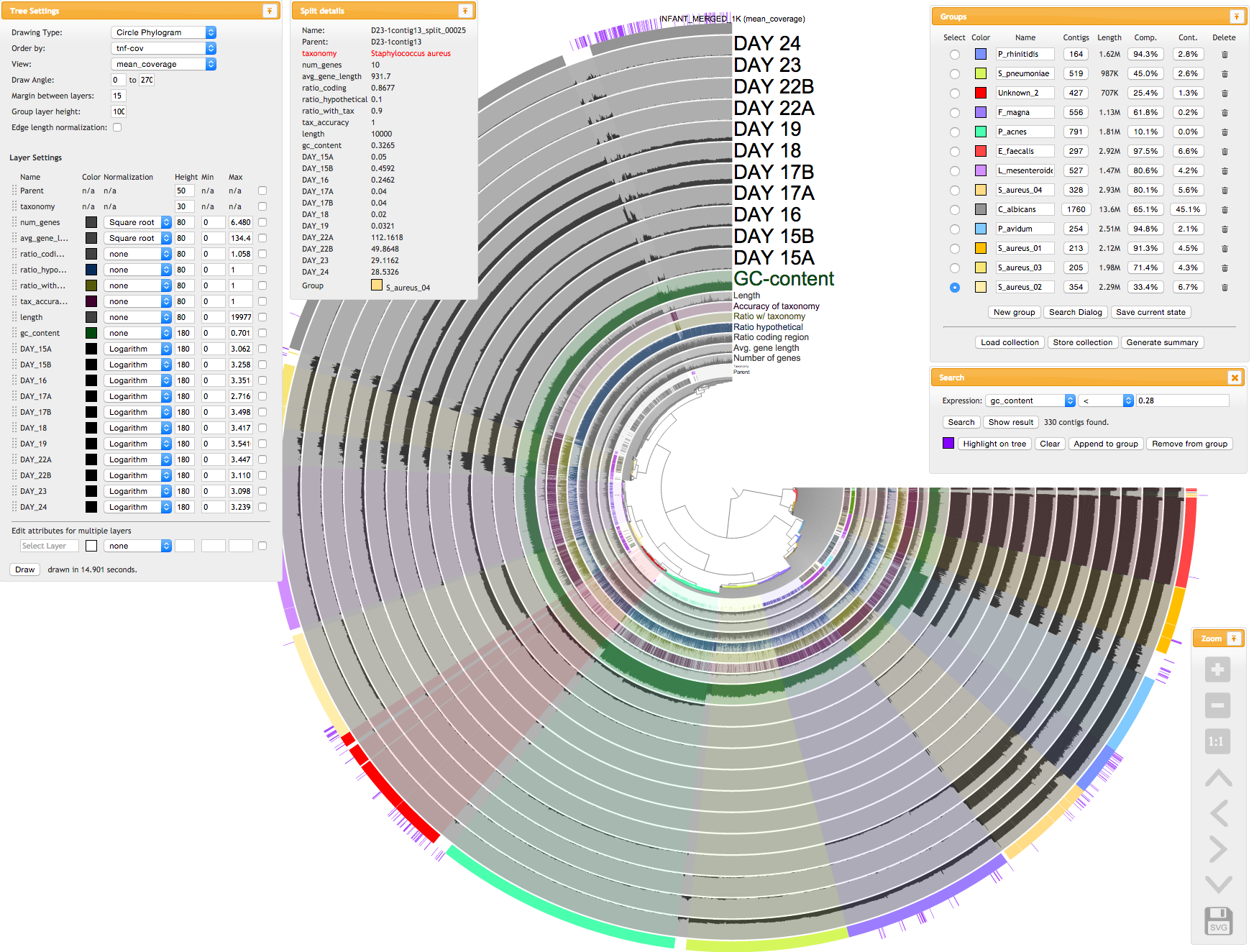
A small computer lab for open-source bioinformatics software (qiime2, anvi'o) and databases (PR2, SILVA, GTDB)
Y 3-4: Research priorities
|
|
Years 1-2 |
|---|---|
|
|
Years 3-4 |
|
|
Year 5 onwards |


- Start sampling of West WB, publish results
- Build infrastructure for process studies

- Start with "shovel-ready" projects
- Explore local systems

- Explore collaborations with Bruce Hatcher (CBU), We’koqma’q First Nation for sampling
-
Use 3-domain metabarcoding to publish on:
- Phytoplankton bloom time-series in WB
- Depth profiles of WB = influence of geo- chemistry on community composition

Needham & Fuhrman (2016), 10.1038/nmicrobiol.2016.5

First publications from WB-EGO
Y3-onwards: Equipment needs
|
|
Years 1-2 |
|---|---|
|
|
Years 3-4 |
|
|
Year 5 onwards |




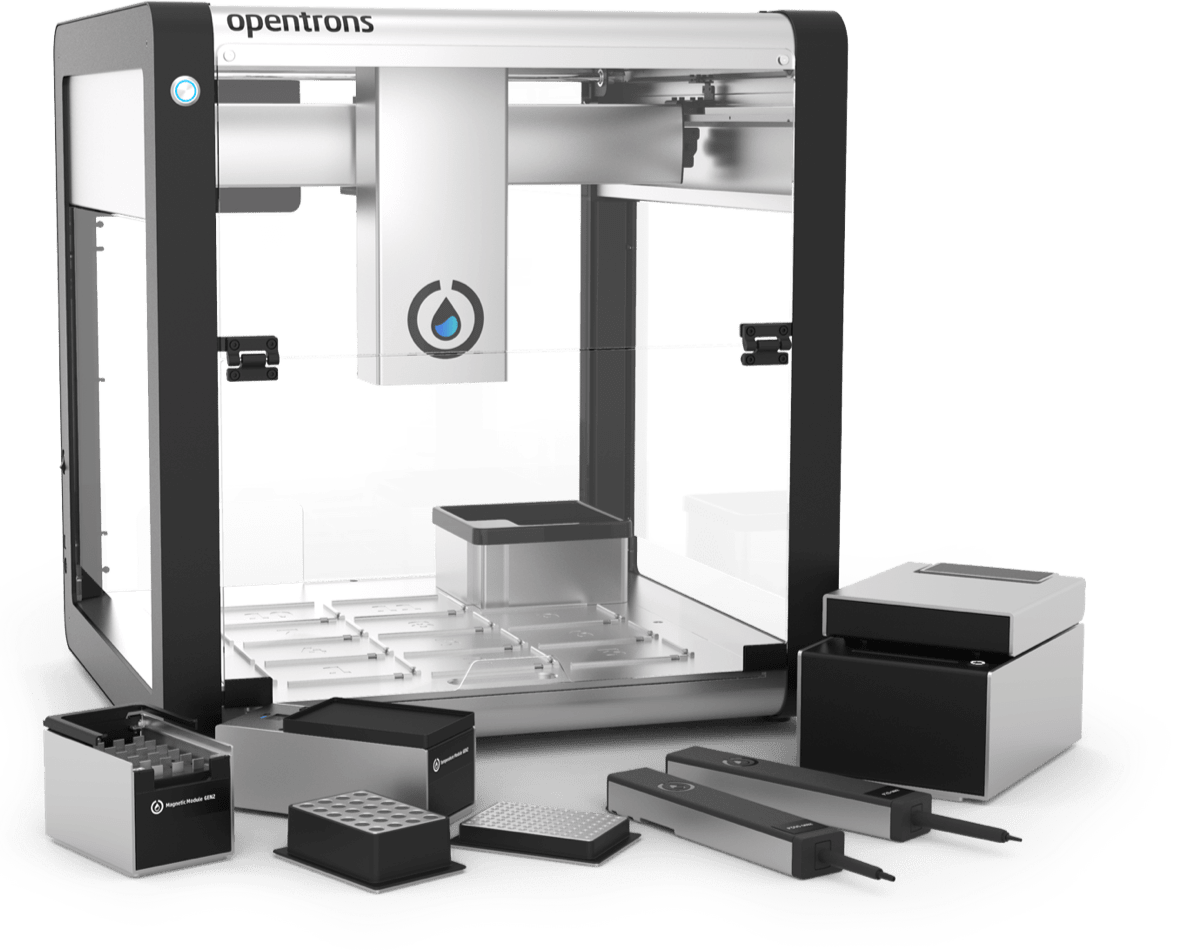
Robotic automation for high-throughput DNA prep
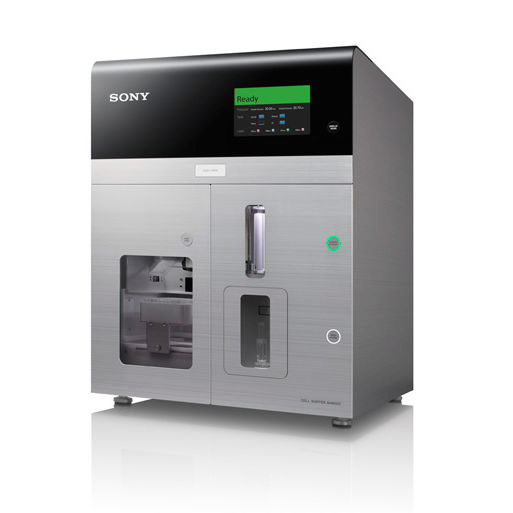
Automatic cell sorter to measure in situ activity, sort cells for sequencing
Optional, could collaborate or buy second-hand
~$20,000 USD for full NGS automation
Long term vision: A lab that links microbial diversity & biogeochemical function in the context of global ecosystem change with modern 'omics-enabled techniques

WB-EGO
In silico
Laboratory
Field work
Experience as mentor & collaborator
- NGS, FISH, cultivation, analytical chemistry
- 2 undergrad projects, 1 graduate student (US, HK)
- Pipelines for analysis of amplicon / 'omics data
- 1 undergrad project, 1 postdoc, grad students (US, Germany)
- 3 research cruises
- Methods development, multiple collaborations
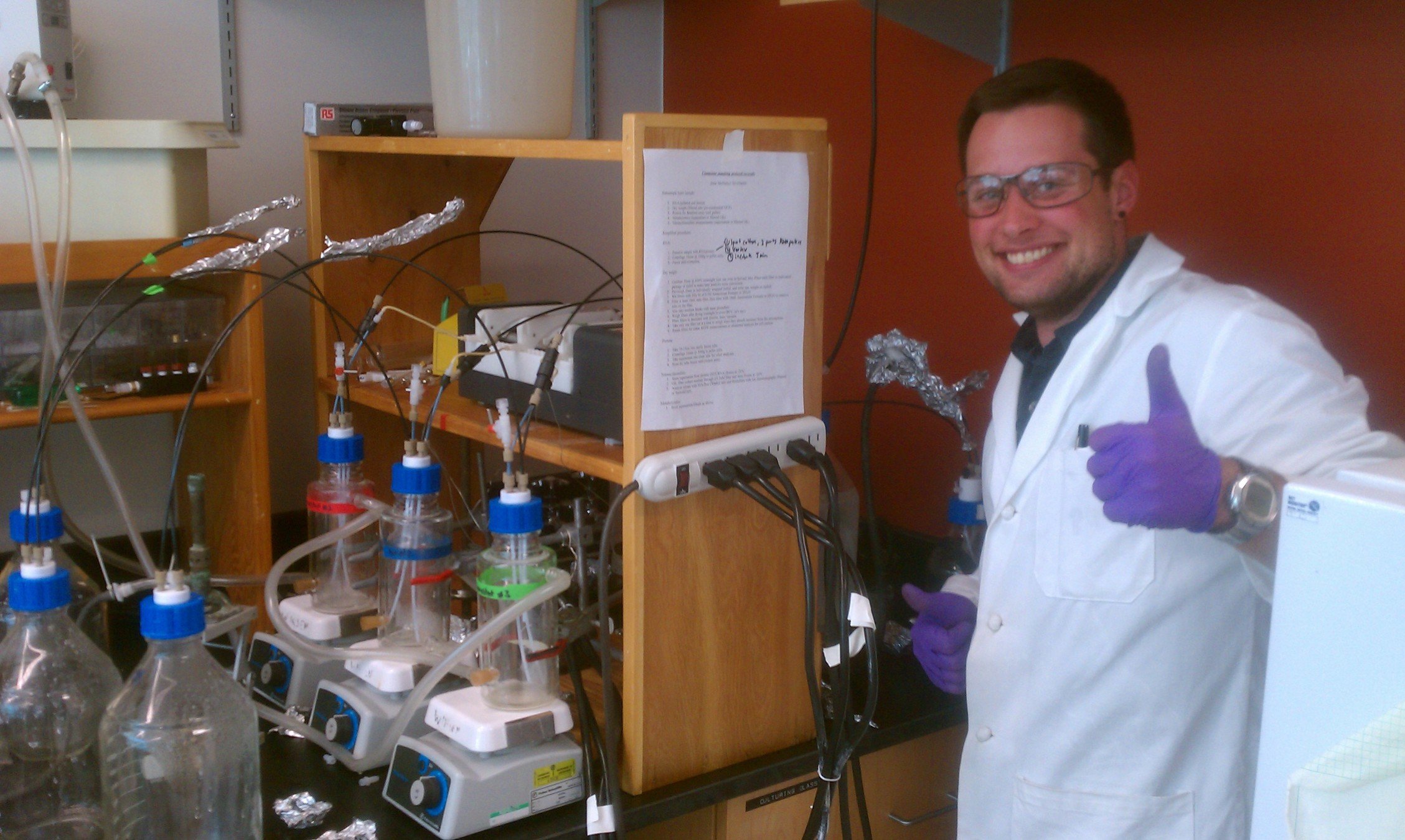
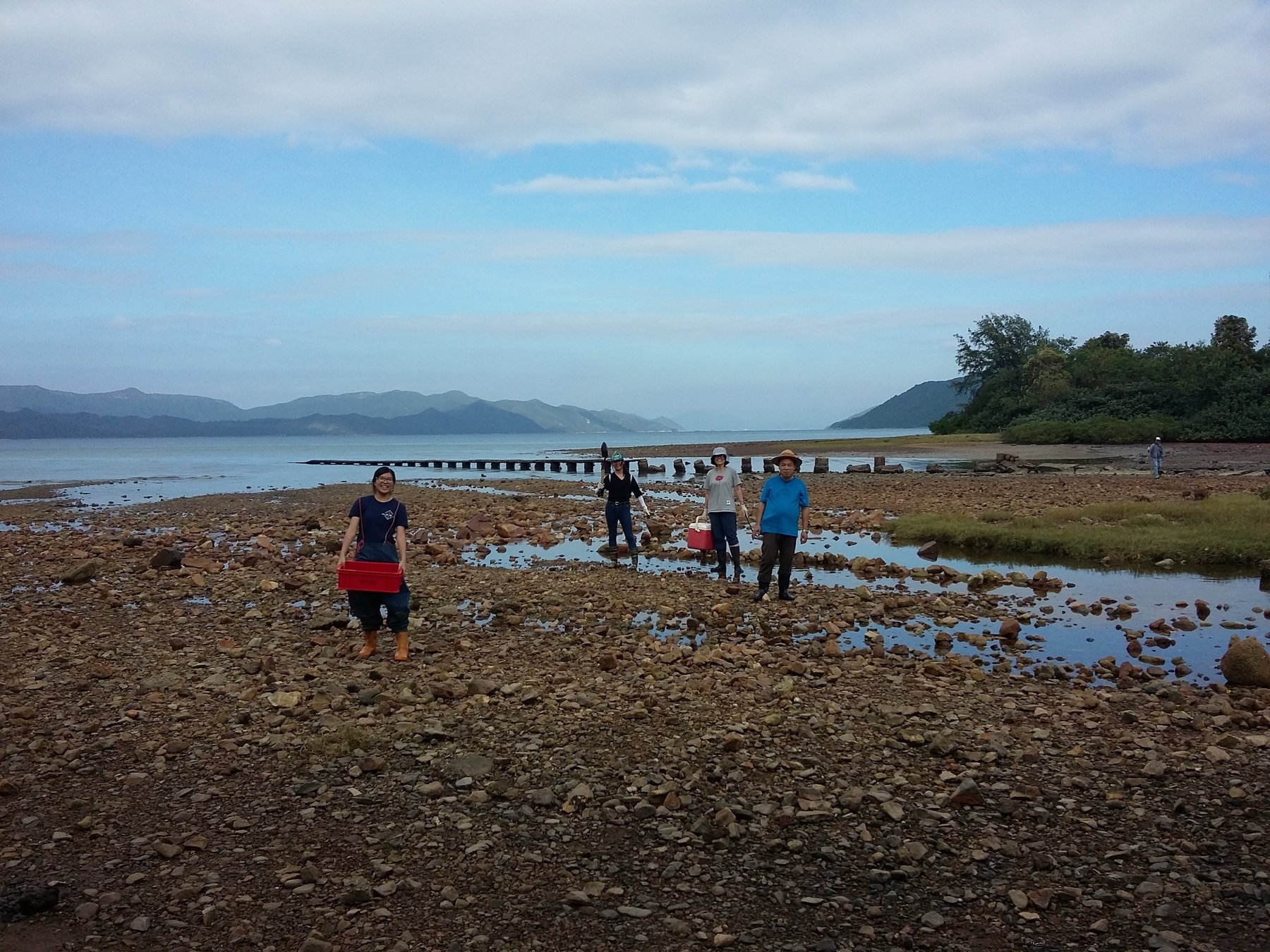



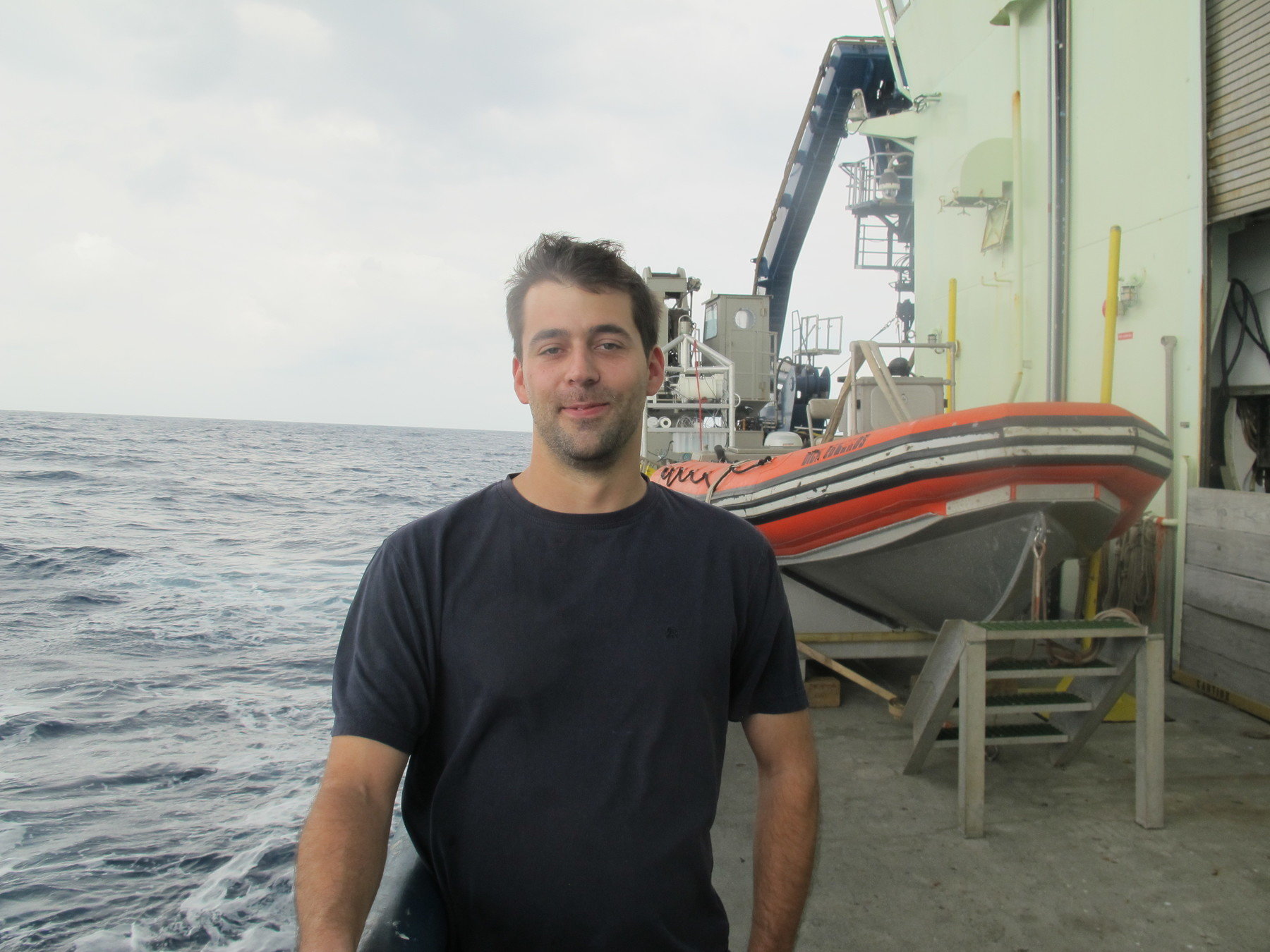
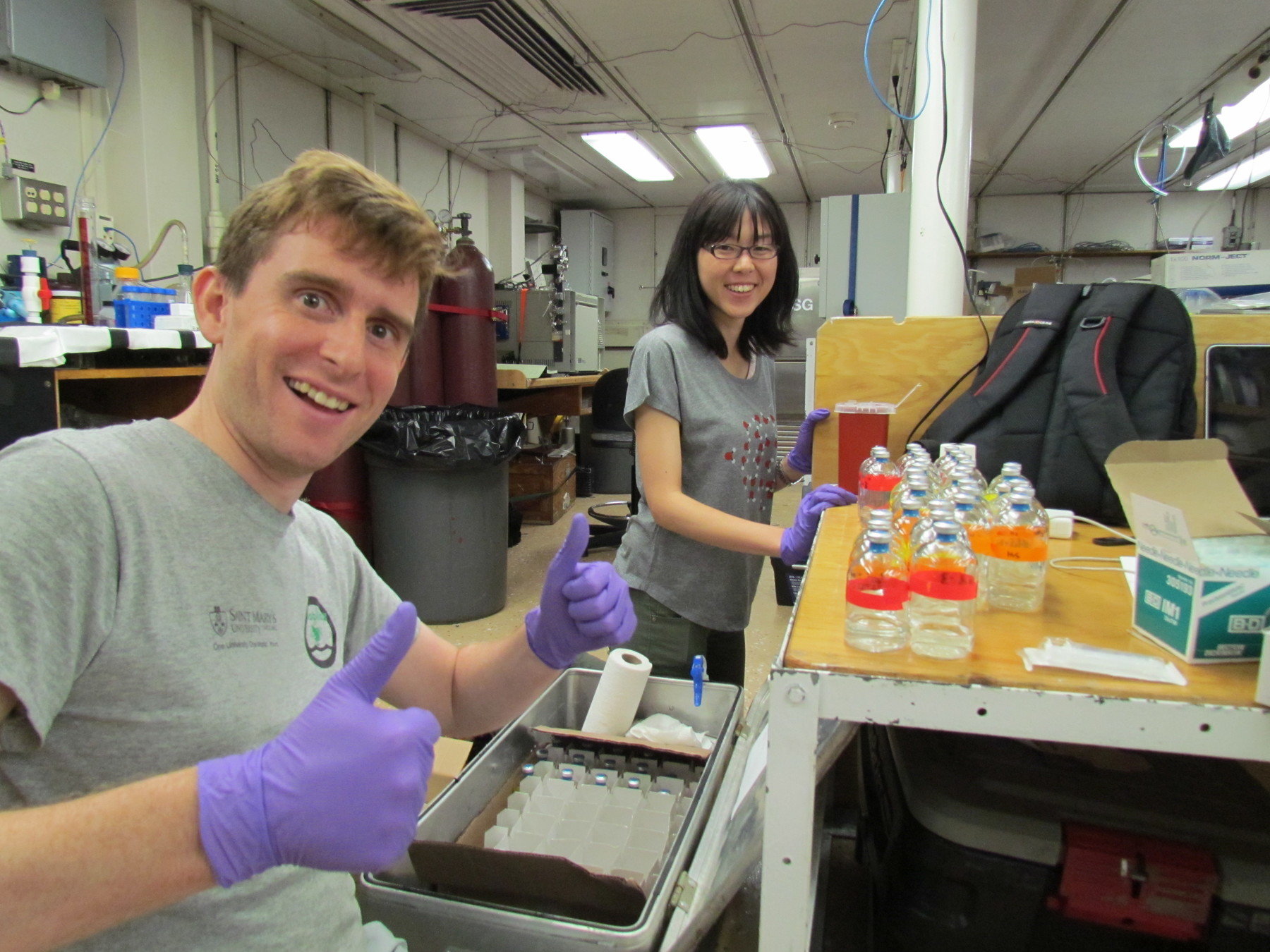
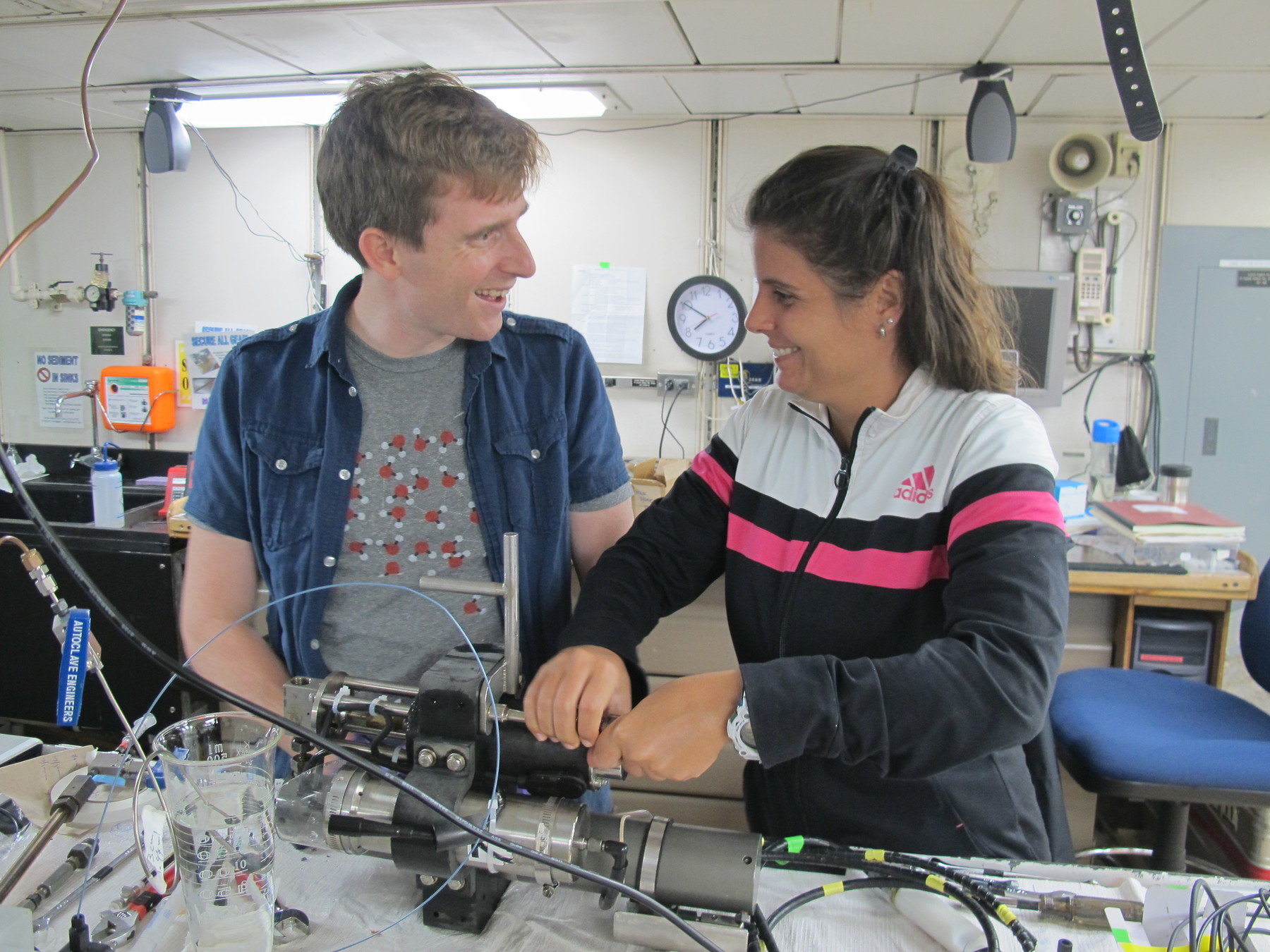
Mentoring philosophy & DEI
Instrumental
-
Real data, relevant skills, important questions, diverse collaborations
- Flexible, adaptable, part of "big picture"
Psychosocial
Evidence-based approaches
-
Mentoring to foster emotional belonging and research success
- Realize full potential
- Foster collaboration
- Modern pedagogy, research project scaffolding, culturally-aware mentoring

Motivated by desire to understand the Earth System

We anticipate that as trait-based biogeography continues to evolve, micro- and macroorganisms will be studied in concert, establishing a science that is informed by and relevant to all domains of life.” -Green, Bohannan, and Whitaker, Science (2008)
Ecosystem-centered teaching & research
Acknowledgements
WHOI / UFZ: Stefan Sievert, Jeff Seewald, François Thomas, Niculina Musat, Craig Taylor
CUHK / Academia Sinica: Haiwei Luo, Annie Wing-Yi Lo, Benny Chan
USC/MIT/UCSB/Dalhousie/Carnegie: Jed Fuhrman, Yubin Raut, Enrico Ser-Giacomi, Paul Berube, Steven Biller, Mick Follows, Stephanie Dutkiewicz, Craig Carlson, Zoe Finkel, Emily Zakem










Sebastián & Gasol (2019), 10.1098/rstb.2019.0083 ; McNichol et al (2018) 10.1073/pnas.1804351115 ; Zehr (2015) 10.1126/science.aac9752; Bramucci et al (2021) 10.1038/s43705-021-00079-z

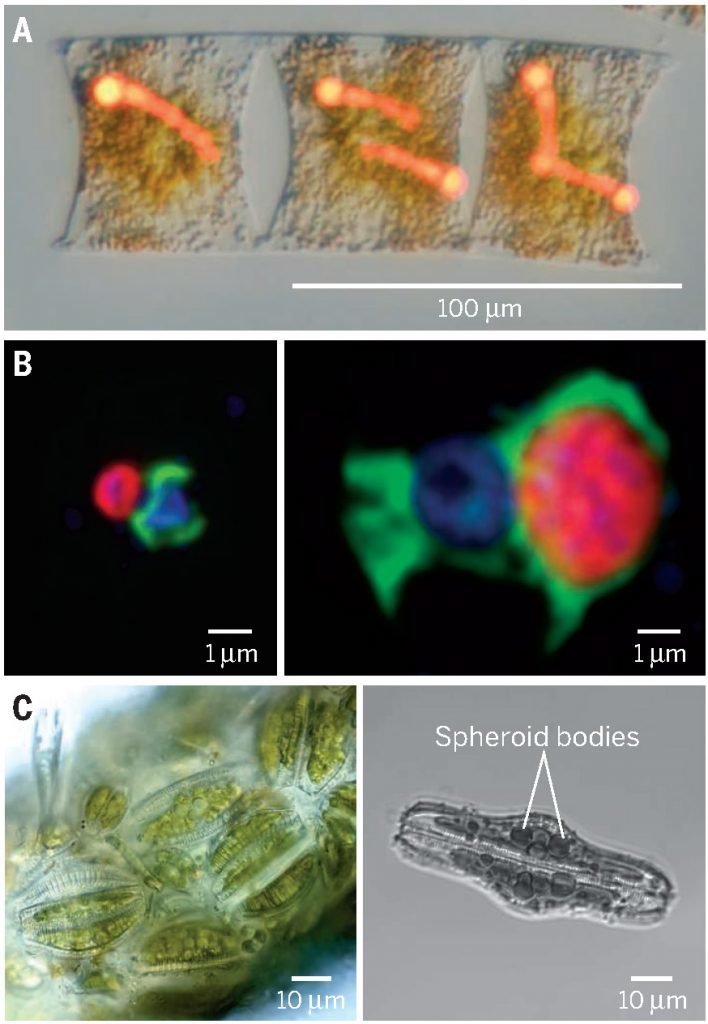

Long term: microscale ecology & biogeochemistry
- Taxonomy (CARD/HCR-FISH) / transcription (FISH-TAMB)
- Respiration, cell viability (RSG); Polyphosphate content (DAPI)
Automatic cell-sorting + environmental databases = taxon-specific activity or genetic potential measurements
Many uses for sorted cells:
- Taxon-specific isotope uptake
- Mini-metagenomes with few cells
- Cell isolation for cultivation
Pjevac et al (2019) 10.1111/1462-2920.14739
Multiple sorting axes now possible

Long term: microscale cell sorting


Experience with microscale methods
Specific FISH labeling + radiocarbon incubations = Carbon fixation rates were measured at the genus level and across different conditions

Microbe art: @claudia_traboni
p16S
e16S
18S
-
Comprehensive community data from single PCR assay:
- p(rokaryotic)16S
- e(ukaryotic)16S
- Eukaryotic 18S
3-domain metabarcoding quantifies the whole ecosystem

Microbe art: @claudia_traboni
18S
p16S
e16S
-
Comprehensive community data from single PCR assay:
- p(rokaryotic)16S
- e(ukaryotic)16S
- Eukaryotic 18S
3-domain metabarcoding quantifies the whole ecosystem
Long-term scientific questions
Local work (Whycocomagh or elsewhere):
- What can spatiotemporal abundance patterns and interaction networks from 3-domain metabarcoding contribute to models?
- What biogeochemical functions do the prokaryotes catalyze?
- What are the biogeochemical consequences persistent stratification in W. Whycocomagh bay?
Global/local work:
- Can targeted mini-metagenomes improve databases & models?
- Can we cultivate microbial dark matter?
Vent work:
- What proportion of organisms are active?
- How abundant are oxygen-sensitive / tolerant types in situ?
Outside the box
Departmental / interdepartmental collaborations:
- Identify microbial symbioses / interactions with plants & animals with single-cell methods
- Use 3-domain metabarcoding during incubation studies / field sampling
- Collaboration with Earth Science for ongoing biogeochemical work
Access work:
- How to make microbiome profiling more accessible, affordable, reliable?
- How can diverse students be nurtured?
Natural history:
- What unique projects can students of Native Microbiota devise?
- A "SEA-PHAGES"-like project?
Holistic techniques "at sea"
-
"Rosetta stone" => FISH probes:
- Cell enrichment for mini-metagenomes
- Visualize predicted symbioses / other ecological interactions
- Measure cell-specific traits such as biovolume
-
Attempt cultivation of "microbial dark matter":
- Flow cytometry with "live stains"
- Enrichment experiments



Models
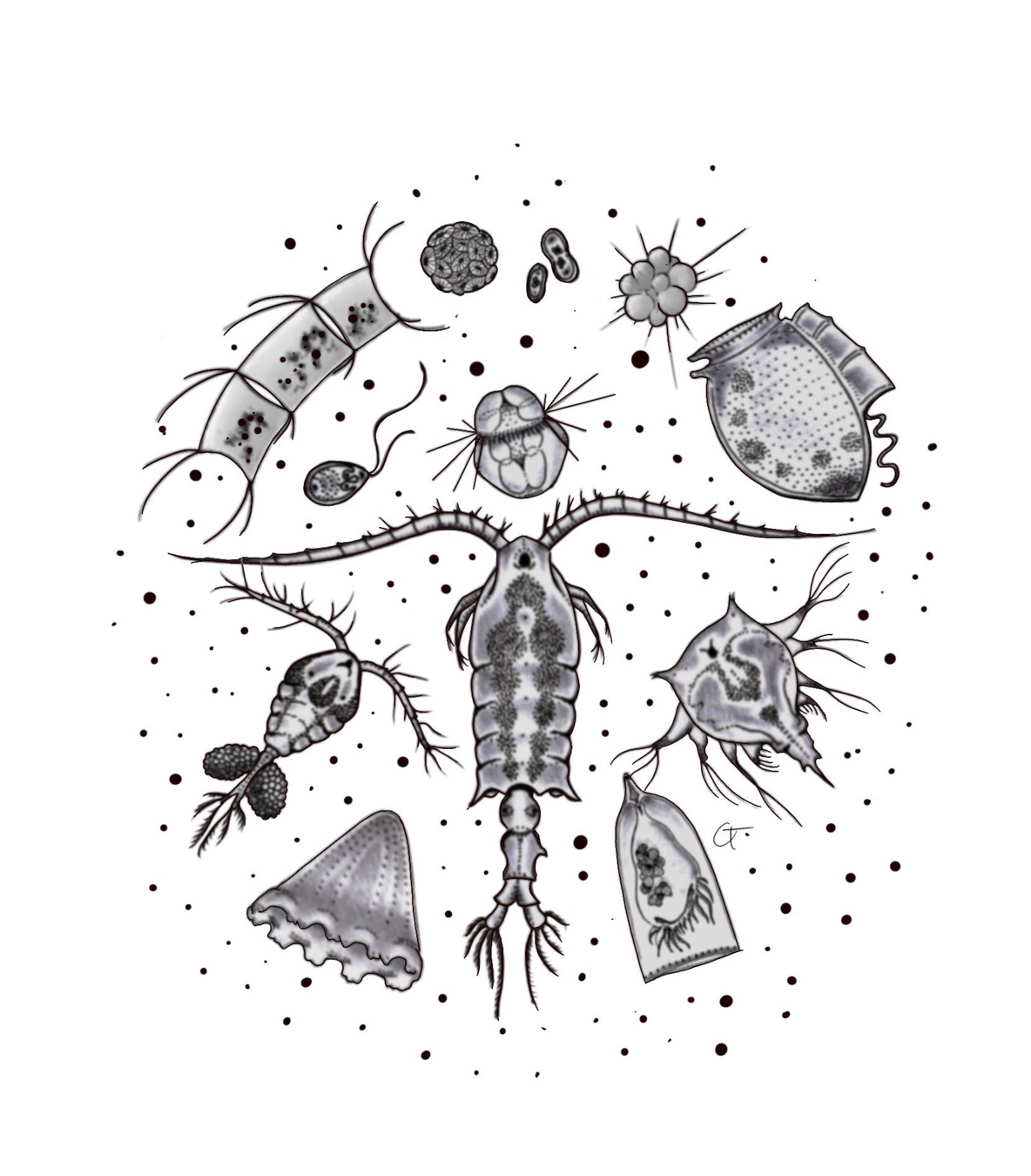
Microbe art: @claudia_traboni
Ecosystem
Kalmbach et al. (2017), arXiv:1703.07309v1



Physics
Biology
Chemistry

Long term: holistic vision
- How can we infer changes in microbial community composition change across decadal time-scales using barcoding data from different regions of SSU rRNA?
Advantages for mentees:
- "Rosetta stone" allows intercomparisons, FISH probe design from barcodes
- Address previously impossible questions
- "Data science" project experience


Dueholm et al. (2020) mBio, e01557-20
Database of full-length 16S rRNA

Example student project #4
- Intercalibration, intercomparison
- Methods development
- Interdisciplinary by nature
- Lots of room for young scientists!


BioGeoSCAPES*
*Depending on funding, availability of reference material
Model-data intercomparison (Yubin Raut, USC)



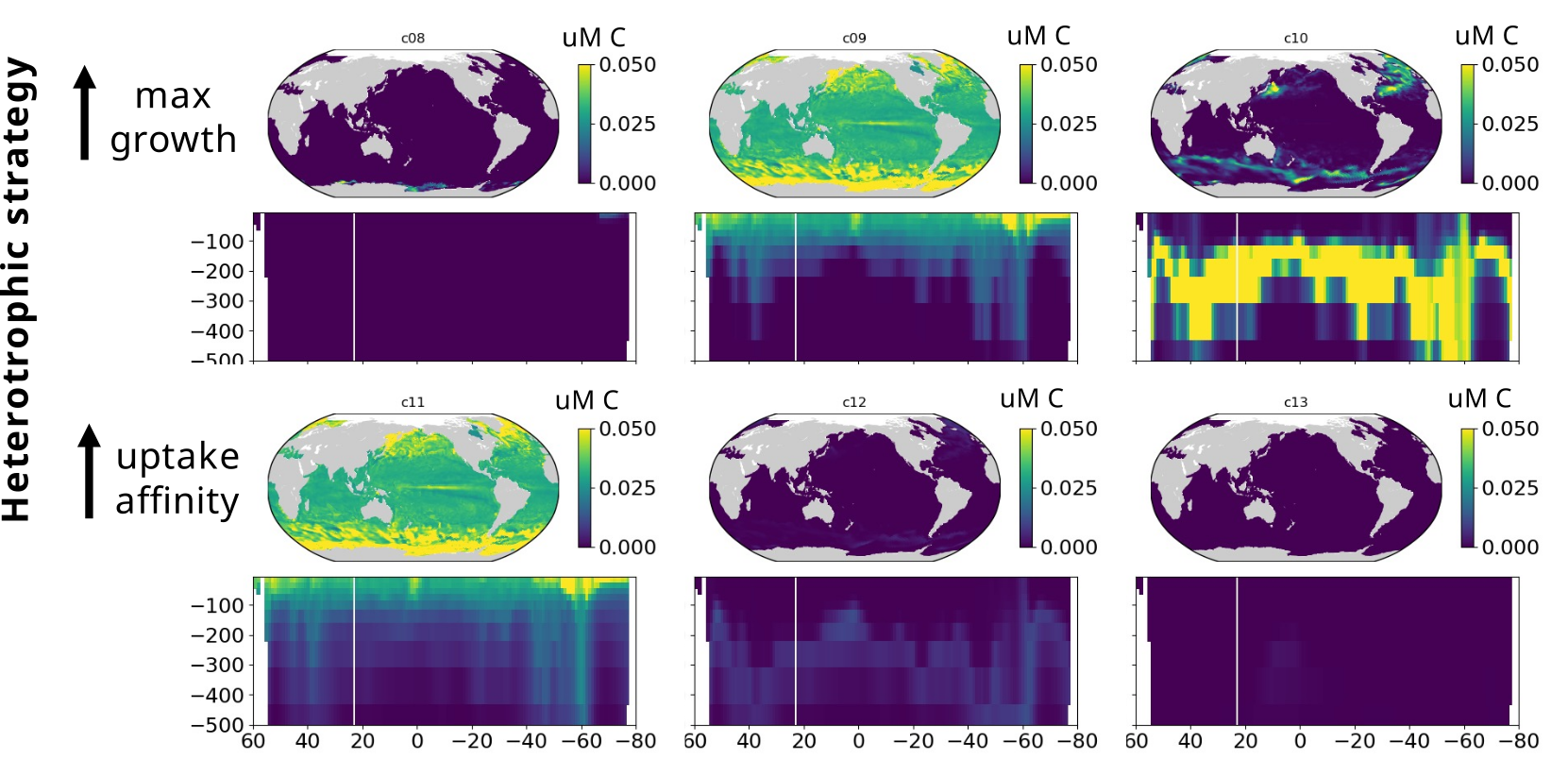
Modelling marine heterotrophs (Emily Zakem, Carnegie Inst.)
- Play key intermediate role between data and modelling worlds
- Basis of application for Simons Foundation "Early Career Investigator in Marine Microbial Ecology and Evolution Awards"
- Contingent on successful NSERC application or other federal award
Biogeography, modelling, and funding

Research impact

Subsurface C production > 10 - 10,000x photic zone export
Subsurface C production rivals chemosynthetic symbioses



Hydrothermal vent research - summary
-
Address basic questions about oxygen and carbon dioxide metabolism
- Biogeochemical, Earth Systems History implications
- Constrained projects with samples, data, and clear goals
- Bioinformatics, genomics a critical component
- International collaborations
- Similar organisms present in any sulfidic system
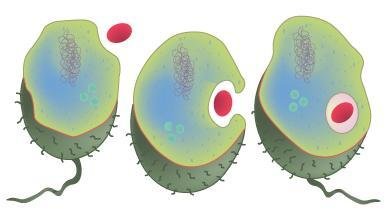

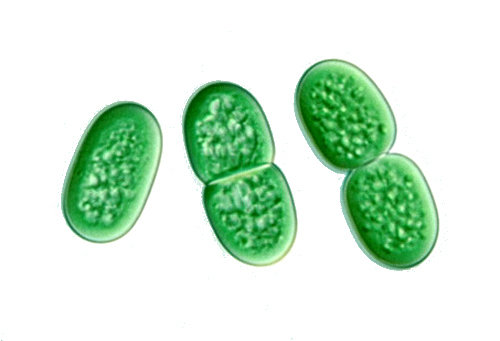
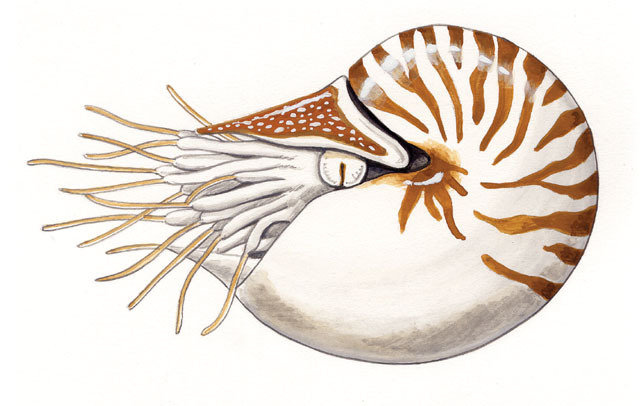
?
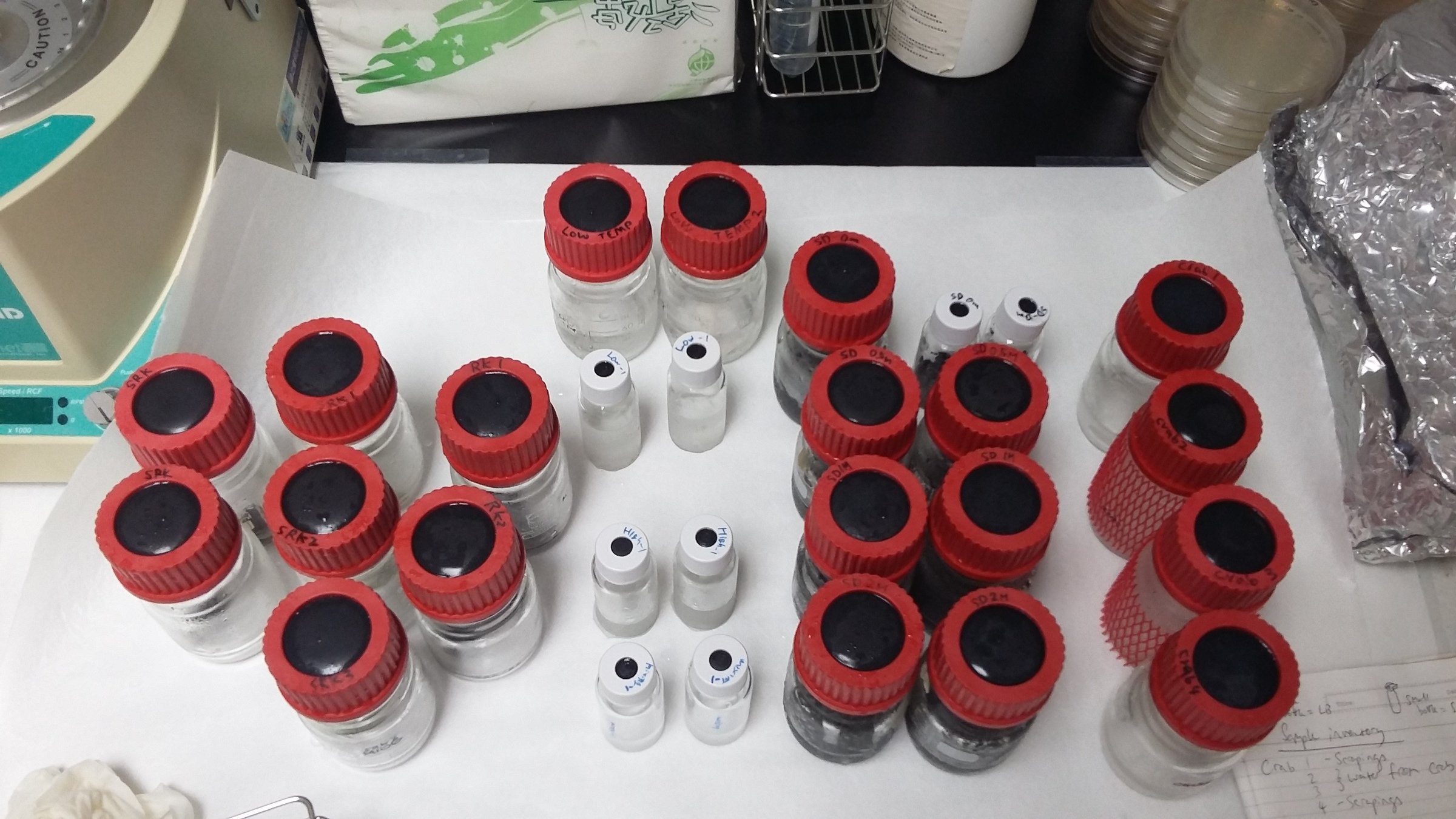




- Developed theoretical metabolic model of chemoautotrophic Campylobacteria during PhD
Campylobacteria, physiology, and evolution

Targets for physiological / evolutionary studies
- Campylobacteria are oxygen-sensitive and capnophiles (CO2-loving), existing in an "intermediate evolutionary state"
-
How does the emergence of genomic traits/clades relate to the development of a more oxic, lower CO2 atmosphere?
- Method: Molecular dating using genome phylogeny
- Japanese collaborator has agreed to contribute genomes









Campylobacteria, physiology, and evolution
Accomplishments & novelty
1. Led in silico method optimization
Universal primers for barcoding work almost* perfectly across global oceans
2. Developed collaborations and generated data




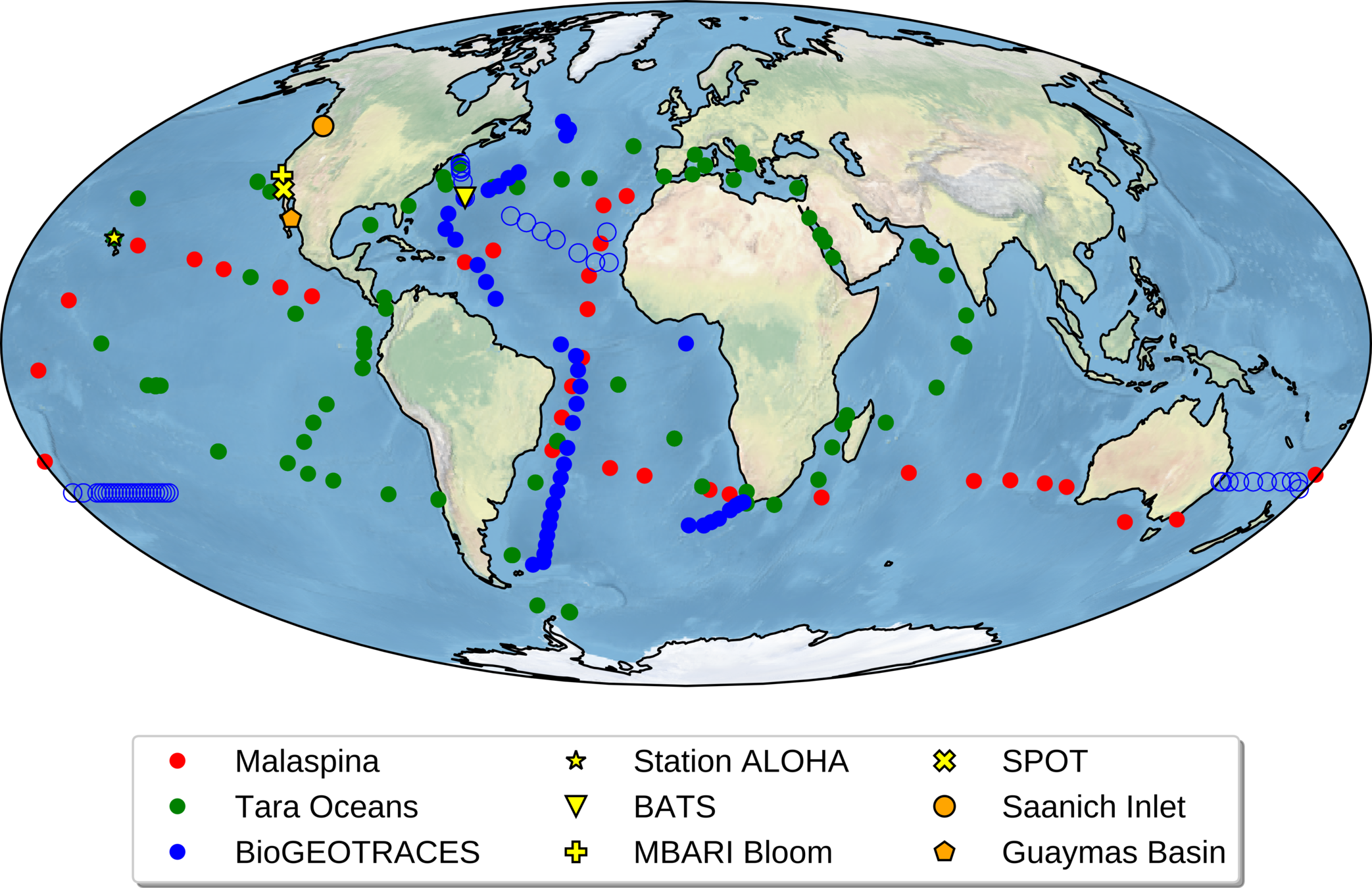
Global metagenomes
Over 800 globally-distributed barcode samples allow model-data intercomparison
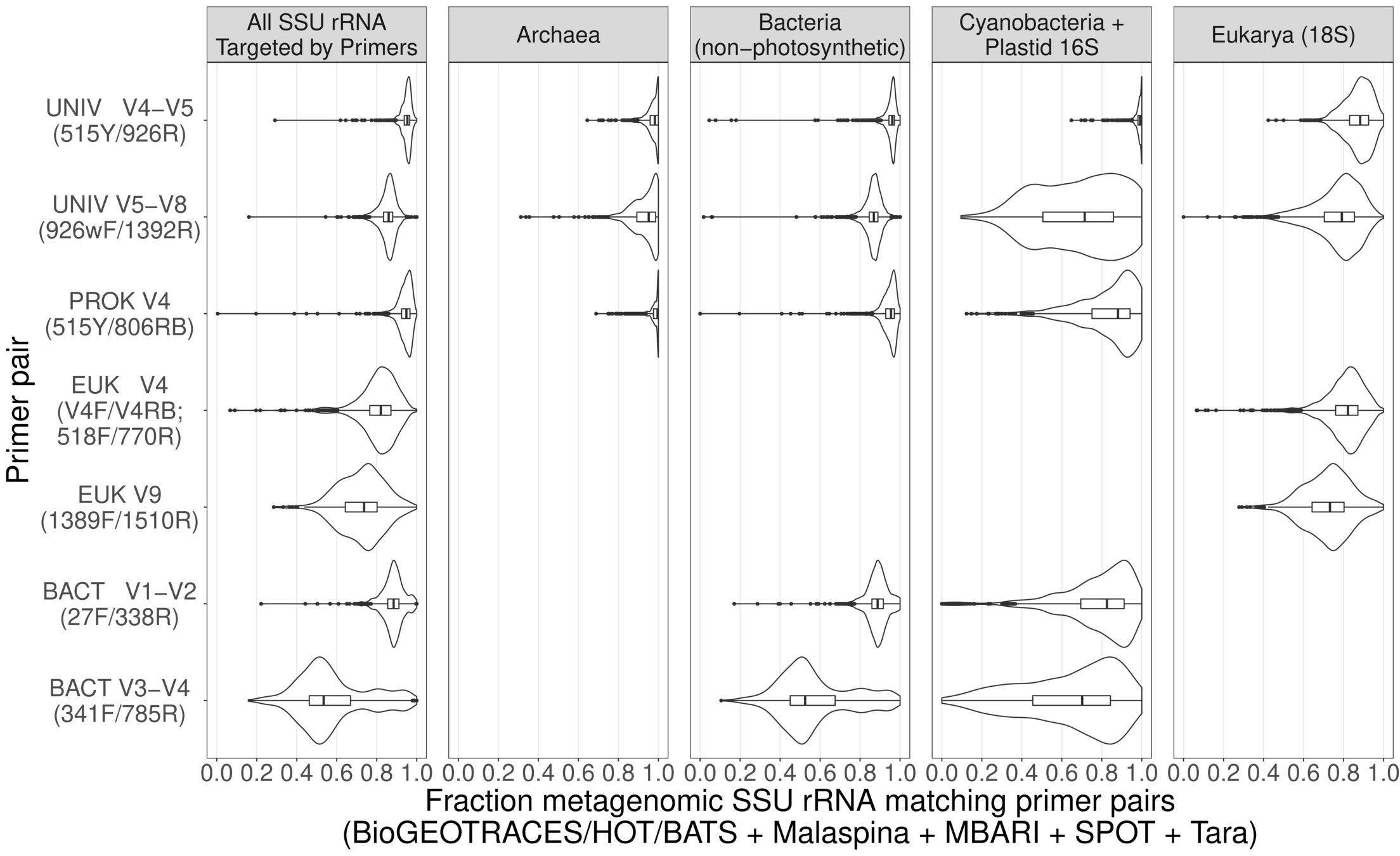


Craig Carlson, UCSB
Potential for training HQP
-
Data Science
- Genomics, amplicon sequencing, FAIR principles
- conda, snakemake, github, bash/python
-
Microbiology
- High-throughput cultivation approaches
-
Environmental science
- Oceanography, water quality
- Holistic ecosystem measurements

Why microbial ecology at StFX?
- Opportunity to focus on fundamental biological research
- Build model (eco)systems, interdepartment collaborations
- Diverse questions / techniques fits with liberal arts education
- Flexible, student-centred projects; CURE
- Maritimes offers a wealth of natural marine environments
- Collaborations in oceanography, ecosystem monitoring

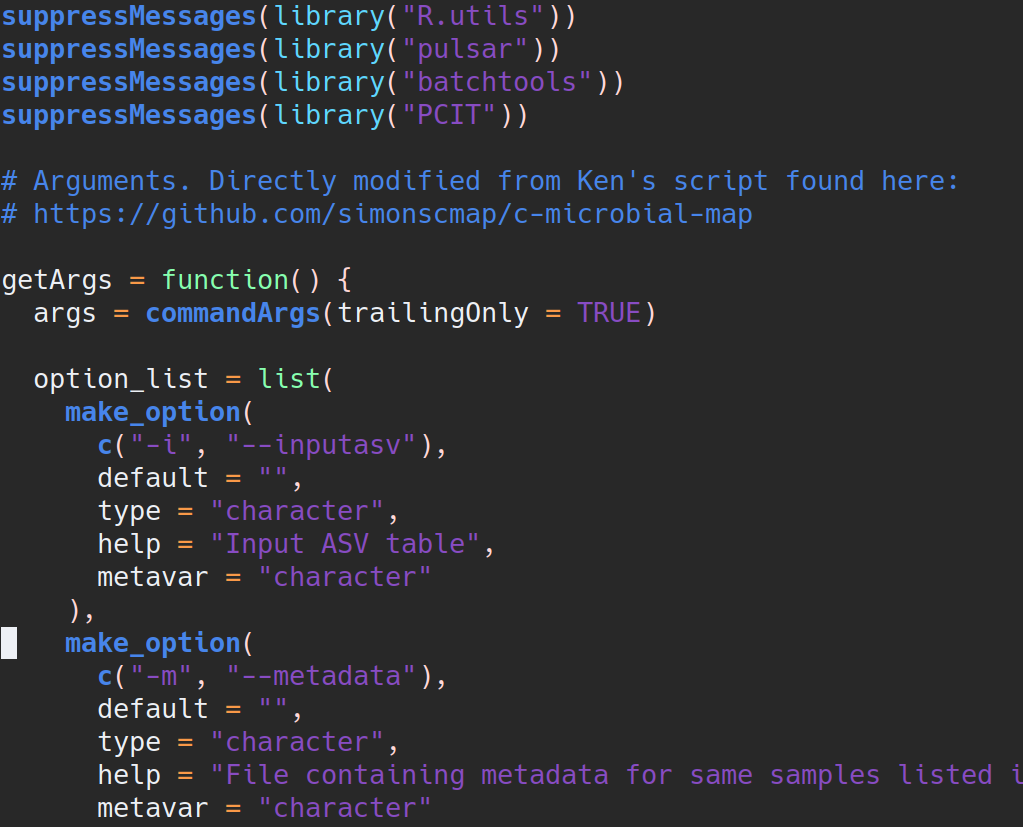


- Methods interact and inform one another
- Points to "microbial natural history"

Holistic picture






Other potential collaborators
- Niculina Musat, Leipzig, Germany
- ProVis: Single-cell techniques including NanoSIMS
- Jeff Seewald, WHOI, USA
- Hydrocarbon chemistry
- Irene Wagner-Döbler / Meinhard Simon, Germany
- Plymouth Marine Laboratory, UK
- Camila Signori, Brazil
- Shengwei Hou, SUSTech, China
Craig Carlson, Elisa Halewood, UCSB
P16S/N
Fraction of 18S amplicon sequences

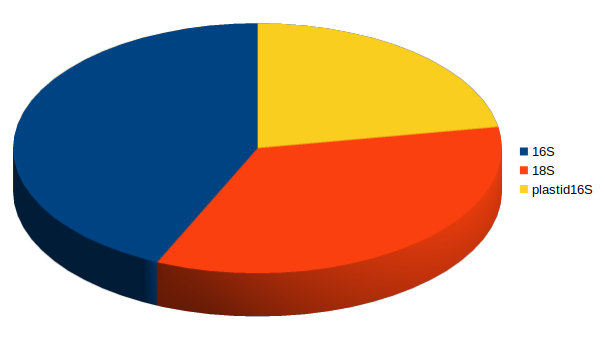
16S
plastid 16S
18S




Jan-Feb 2005
Feb-Mar 2006
With deep sequencing, good coverage for all 3 domains
Looking for interactions
plastid
16S
mito 16S
nuclear 18S
Space / time
Abundance
A eukaryotic phytoplankter
Complementary to existing techniques
"eDNA"




Jan-Feb 2005
Feb-Mar 2006
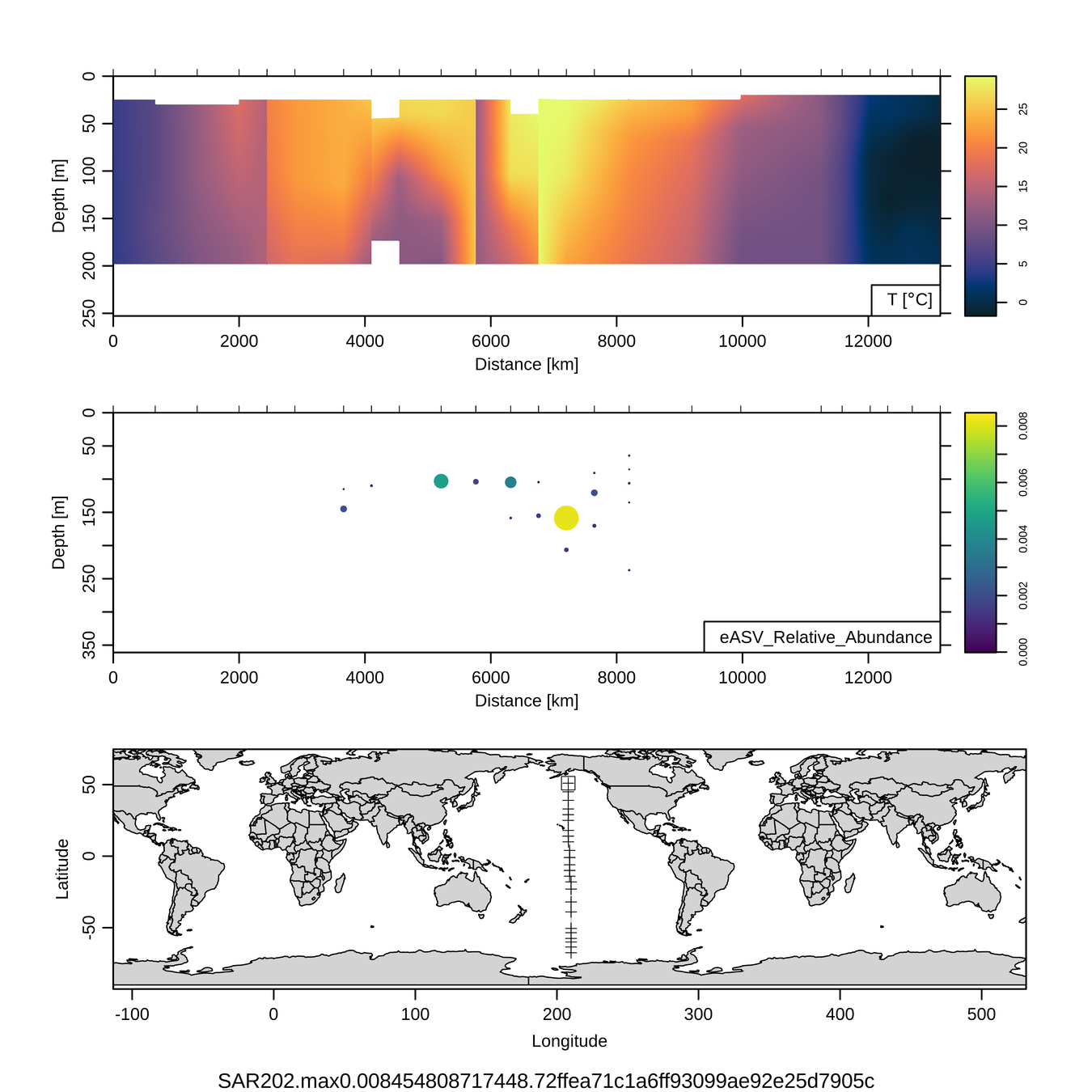
Craig Carlson, Elisa Halewood, UCSB
P16S/N - Biogeography of top 10 SAR202 "species"




Jan-Feb 2005
Feb-Mar 2006
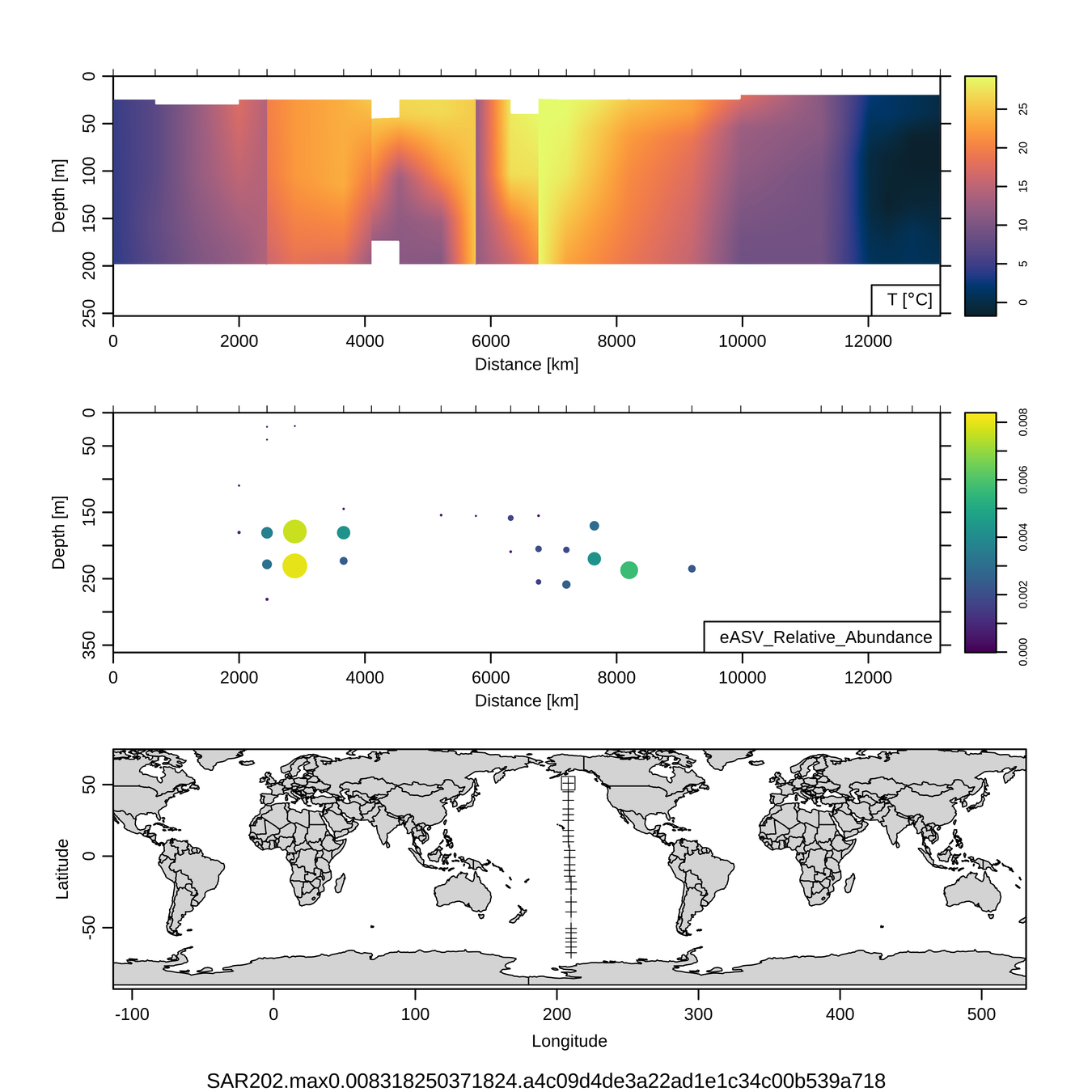
Craig Carlson, Elisa Halewood, UCSB
P16S/N - Biogeography of top 10 SAR202 "species"




Jan-Feb 2005
Feb-Mar 2006
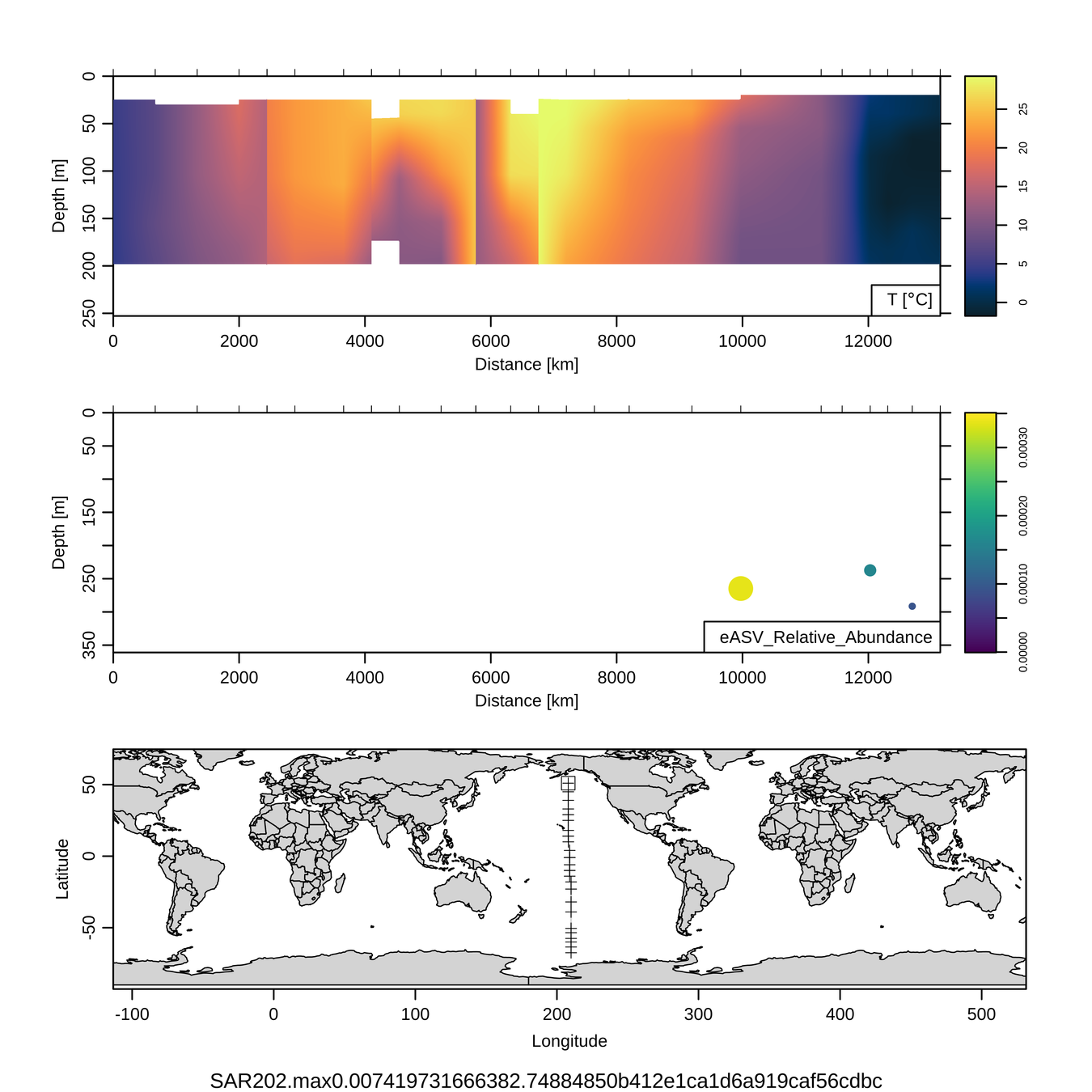
Craig Carlson, Elisa Halewood, UCSB
P16S/N - Biogeography of top 10 SAR202 "species"




Jan-Feb 2005
Feb-Mar 2006
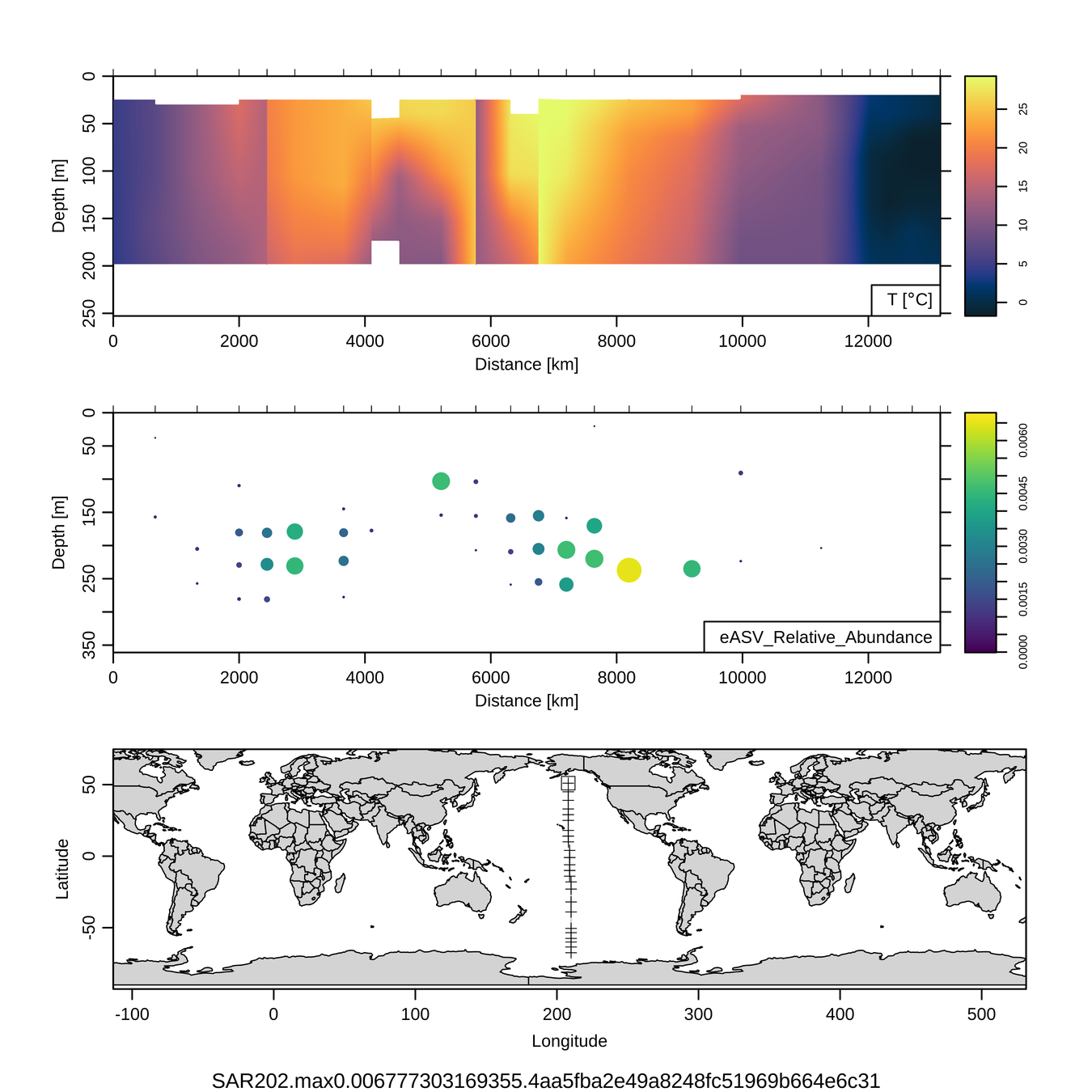
Craig Carlson, Elisa Halewood, UCSB
P16S/N - Biogeography of top 10 SAR202 "species"




Jan-Feb 2005
Feb-Mar 2006
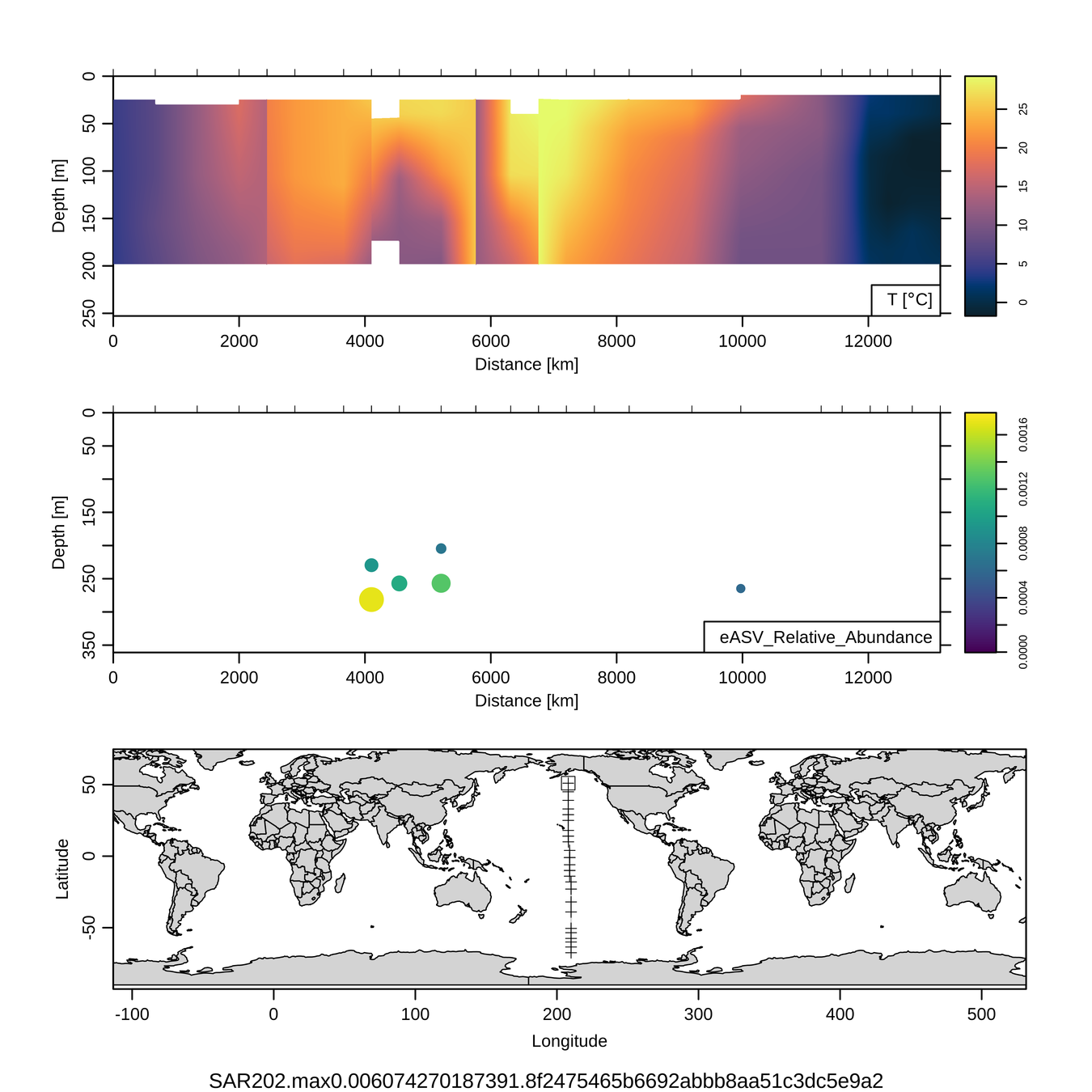
Craig Carlson, Elisa Halewood, UCSB
P16S/N - Biogeography of top 10 SAR202 "species"




Jan-Feb 2005
Feb-Mar 2006
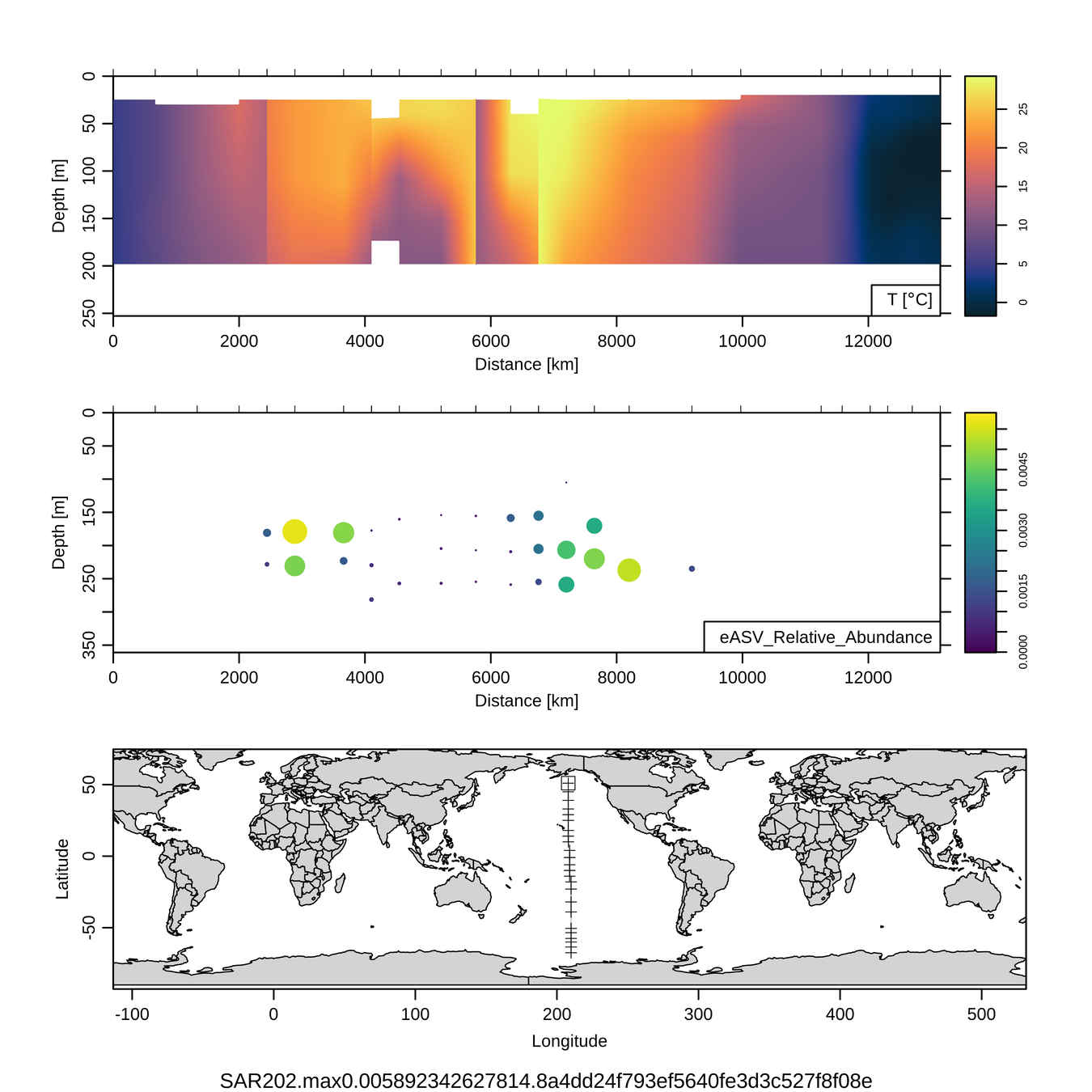
Craig Carlson, Elisa Halewood, UCSB
P16S/N - Biogeography of top 10 SAR202 "species"




Jan-Feb 2005
Feb-Mar 2006
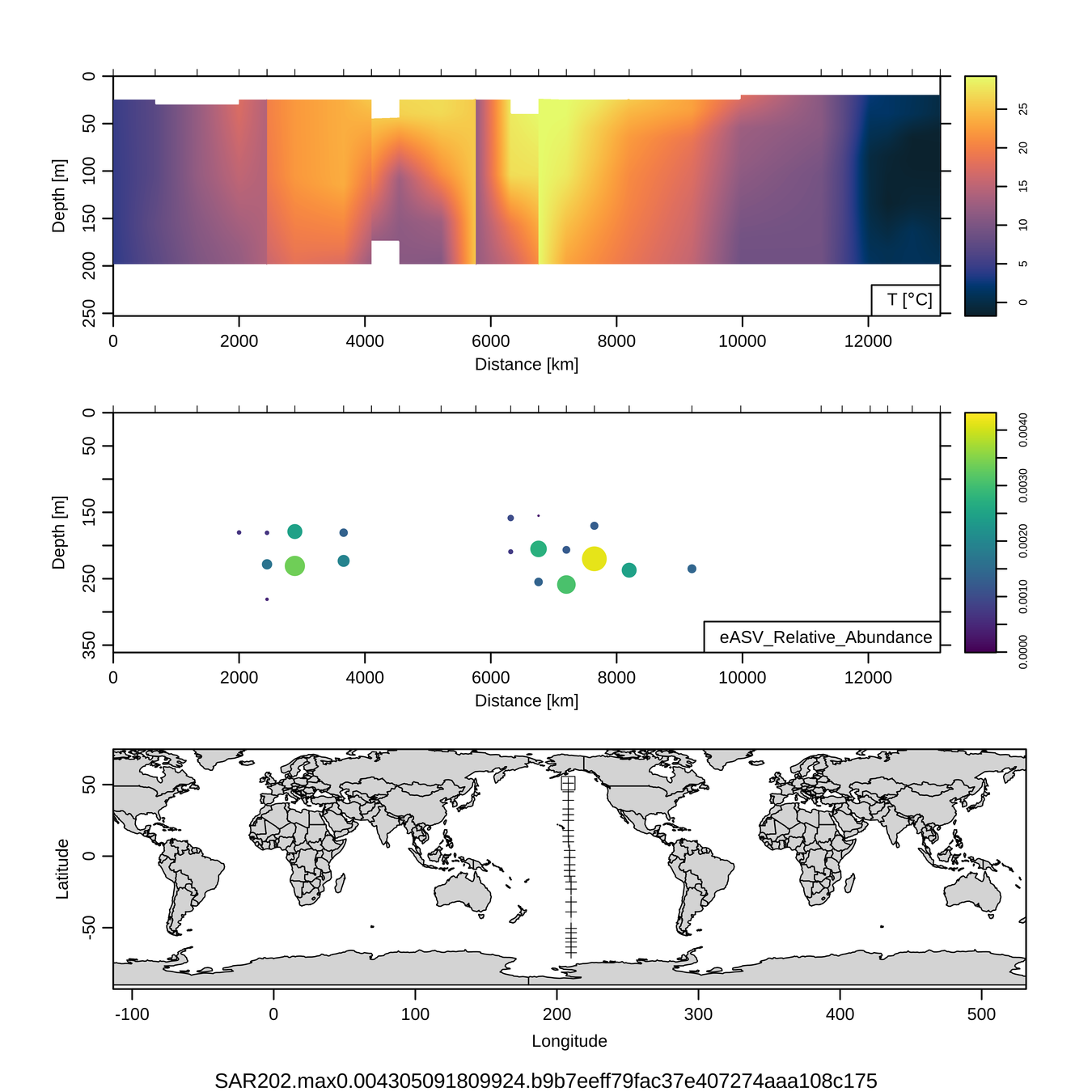
Craig Carlson, Elisa Halewood, UCSB
P16S/N - Biogeography of top 10 SAR202 "species"




Jan-Feb 2005
Feb-Mar 2006
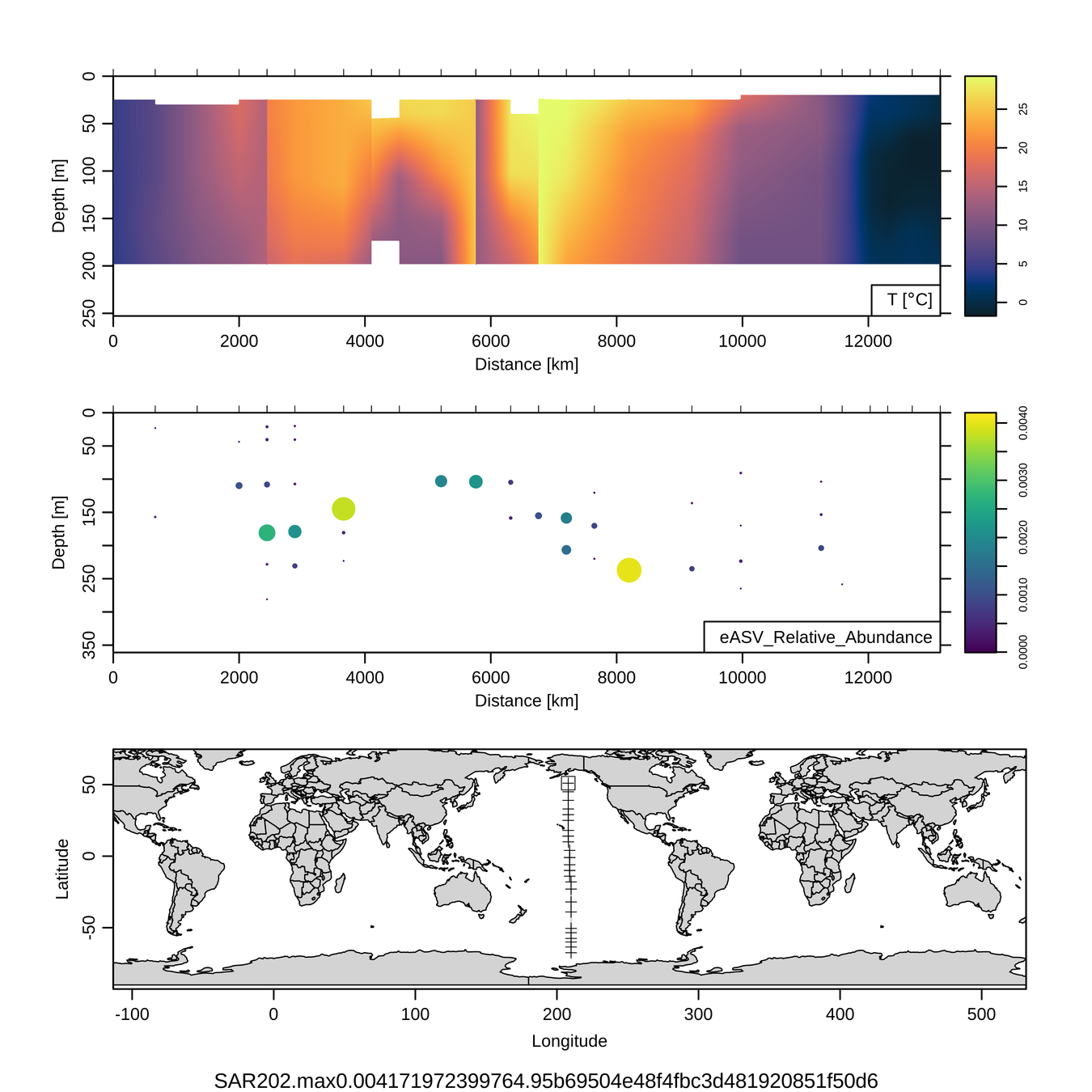
Craig Carlson, Elisa Halewood, UCSB
P16S/N - Biogeography of top 10 SAR202 "species"




Jan-Feb 2005
Feb-Mar 2006
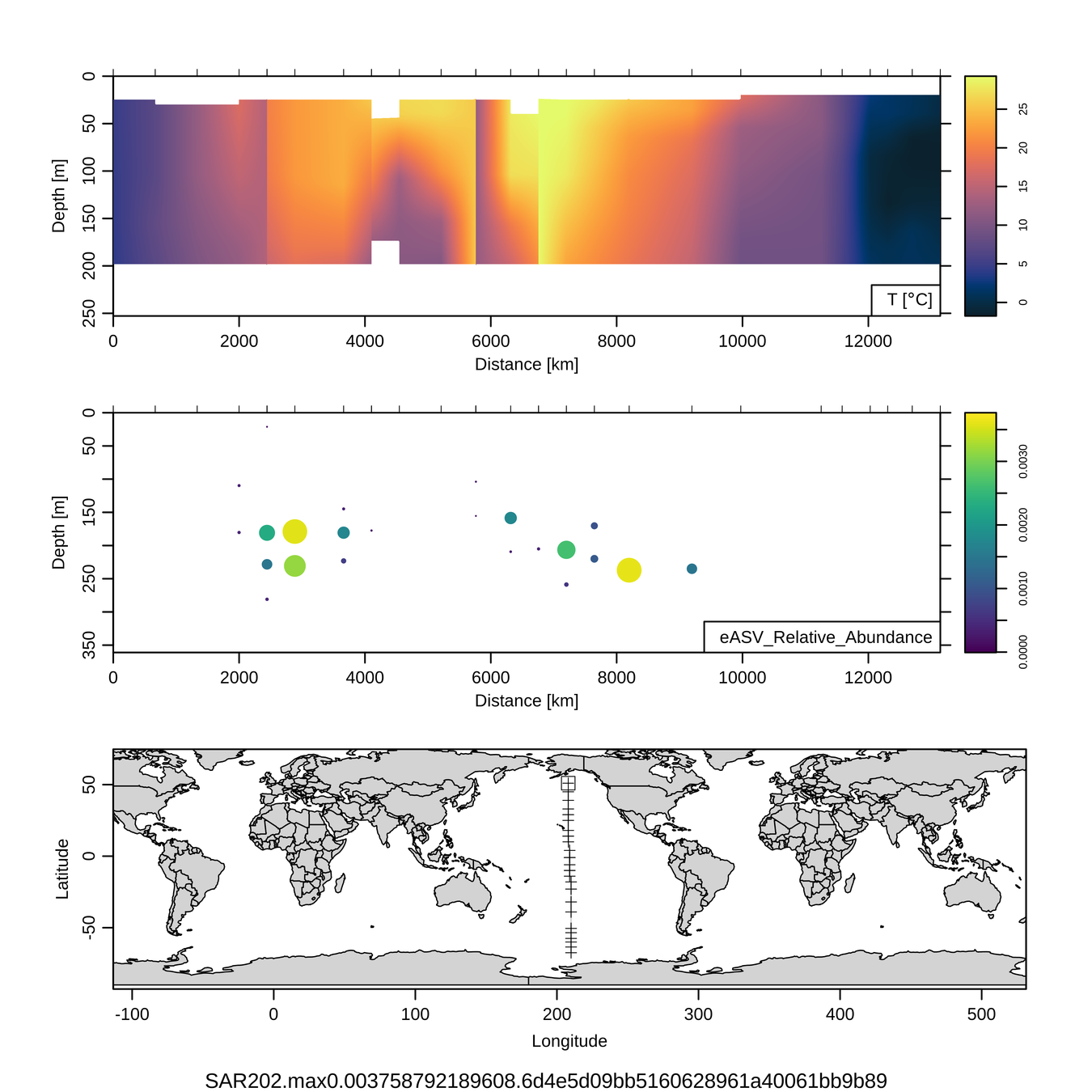
This is only the top 10 from one bacterial taxon!
Similar patterns for phytoplankton (and even some Metazoa)
Craig Carlson, Elisa Halewood, UCSB
P16S/N - Biogeography of top 10 SAR202 "species"
Sources
| Images used in presentation were adapted from: |
|---|
|
Line diagram (slide 9): J. A. Fuhrman, J. A. Cram, D. M. Needham, Marine microbial community dynamics and their ecological interpretation. Nature Reviews Microbiology 13, 133–146 (2015). Metagenome image (slide 19): V.A. Iverson et al., Untangling genomes from metagenomes: revealing an uncultured class of marine Euryarchaeota. Science, 335(6068): 587-590 (2012). Anvi'o used to make image on slide 20: https://merenlab.org/software/anvio/; https://peerj.com/articles/1319/ Shallow-water vent image (slides 20, 22): Y. Li et al., Coupled Carbon, Sulfur, and Nitrogen Cycles Mediated by Microorganisms in the Water Column of a Shallow-Water Hydrothermal Ecosystem. Frontiers in Microbiology. 9:2718 (2018). Speciation image (slides 20, 22): R. Stepanauskas et al., Gene exchange networks define species-like units in marine prokaryotes. bioRxiv, 2020.09.10.291518 (2020). Oxygen diagram (slide 25): L.R. Kump, The Rise of Atmospheric Oxygen. Nature, 451(7176): 277-8 (2008). Water column image on slide 30 adapted from: M. Hügler, S. M. Sievert, Beyond the Calvin Cycle: Autotrophic Carbon Fixation in the Ocean. Annu. Rev. Marine. Sci. 3, 261–289 (2011). |
Unless otherwise noted, other images are either my own (un)published work, ⓒWHOI, or public domain images from Wikimedia Commons
In silico
- Collaboration with modellers
Laboratory
- Method optimization / intercalibration
Field work
- New data collection
Pathways for mentees





In silico
- Study evolution and explore new genomes
Laboratory
- Describe novel taxa, study their physiology
Field work
- Explore new ecosystems
Pathways for mentees





Annie Wing-Yi Lo, CUHK
What I would bring to your department
Microbiology
Ecology & environmental science
Bioinformatics
- > 10 years experience in marine microbial ecology
- Can train mentees in lab, computational, field techniques
- Diverse interests: oceanography, modelling, analytical method development, natural history, evolution
- Passionate about integrating cutting-edge "microbiome" research techniques into my teaching (CURE)
- Track record of successful interdisciplinary collaborations, and excited to build connections at StFX
- Set up equipment for O2-sensitive microbes
- Retrieve cultures / samples / data
- Train students in cultivation, genomic analysis
- Medium term: Develop methods to identify essential genes (Tn-Seq)
- Long term: Conduct isolation campaigns in model systems, do biochemical assays


Cultivation and genomics at StFX





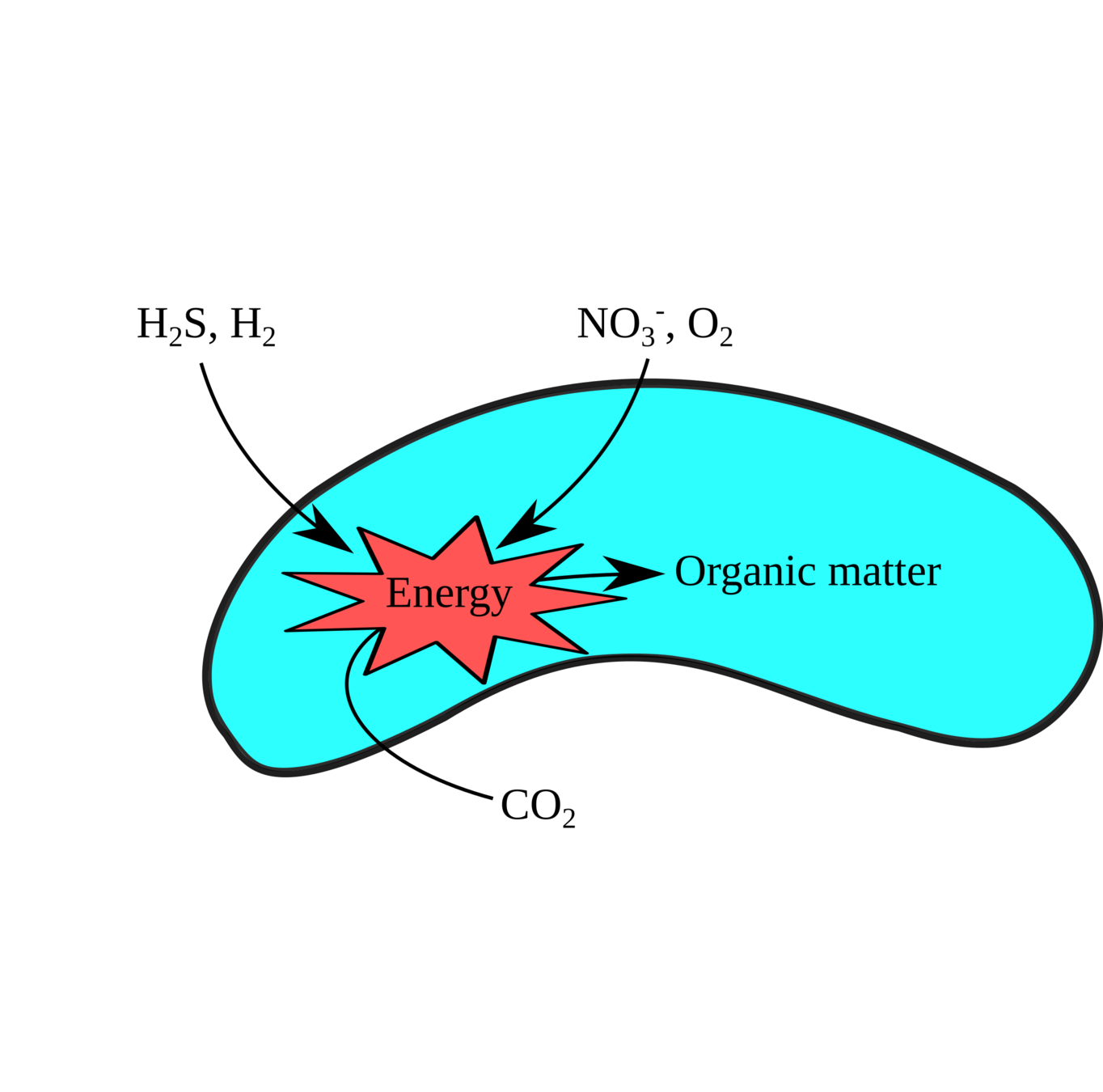
Pure culture physiology / genetics
Integrative techniques: A Microbe's Eye View


Metabolic enzyme function
Integrative techniques: A Microbe's Eye View







Visualization


Genomics
Microbiology
Bioinformatics
Environmental science
Long term vision: A lab that links microbial diversity & biogeochemical function in the context of global ecosystem change with modern 'omics-enabled techniques

How do microbial communities influence the Earth System, and vice-versa?



